IU sweeps tents from Dunn Meadow again, state police make more arrests, after pausing for one day
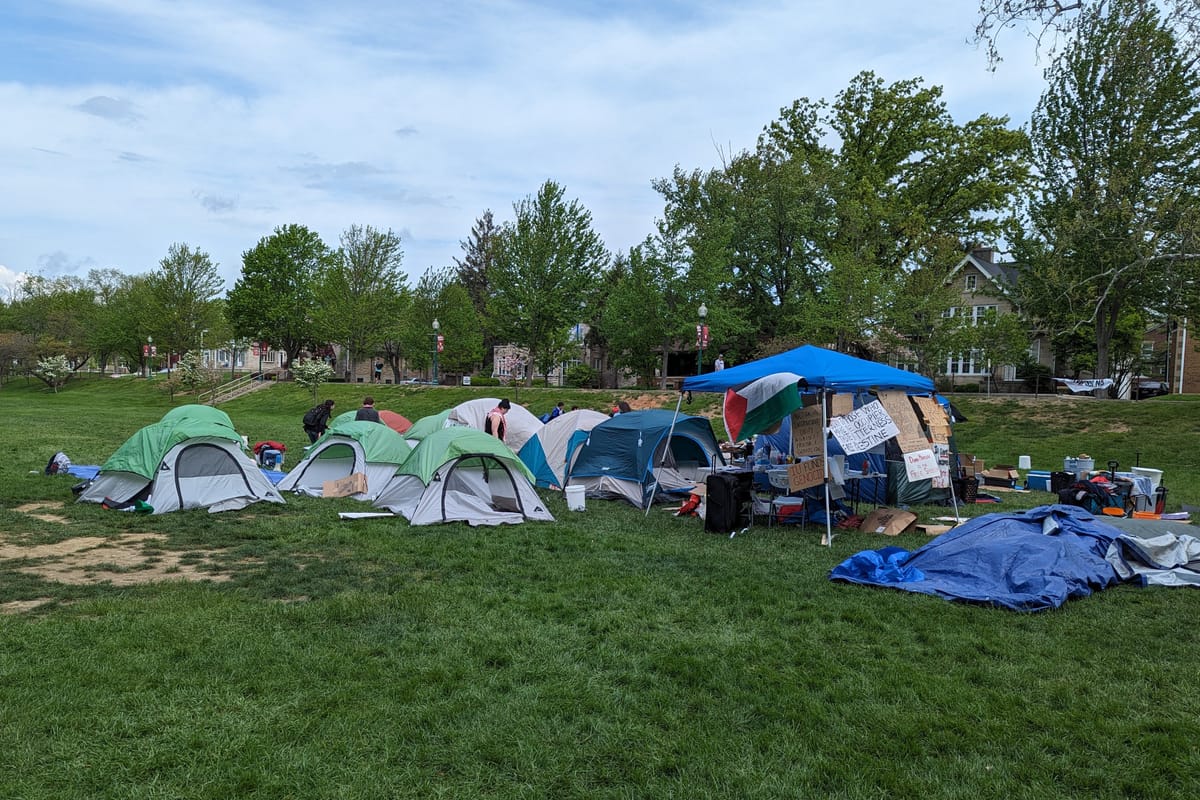



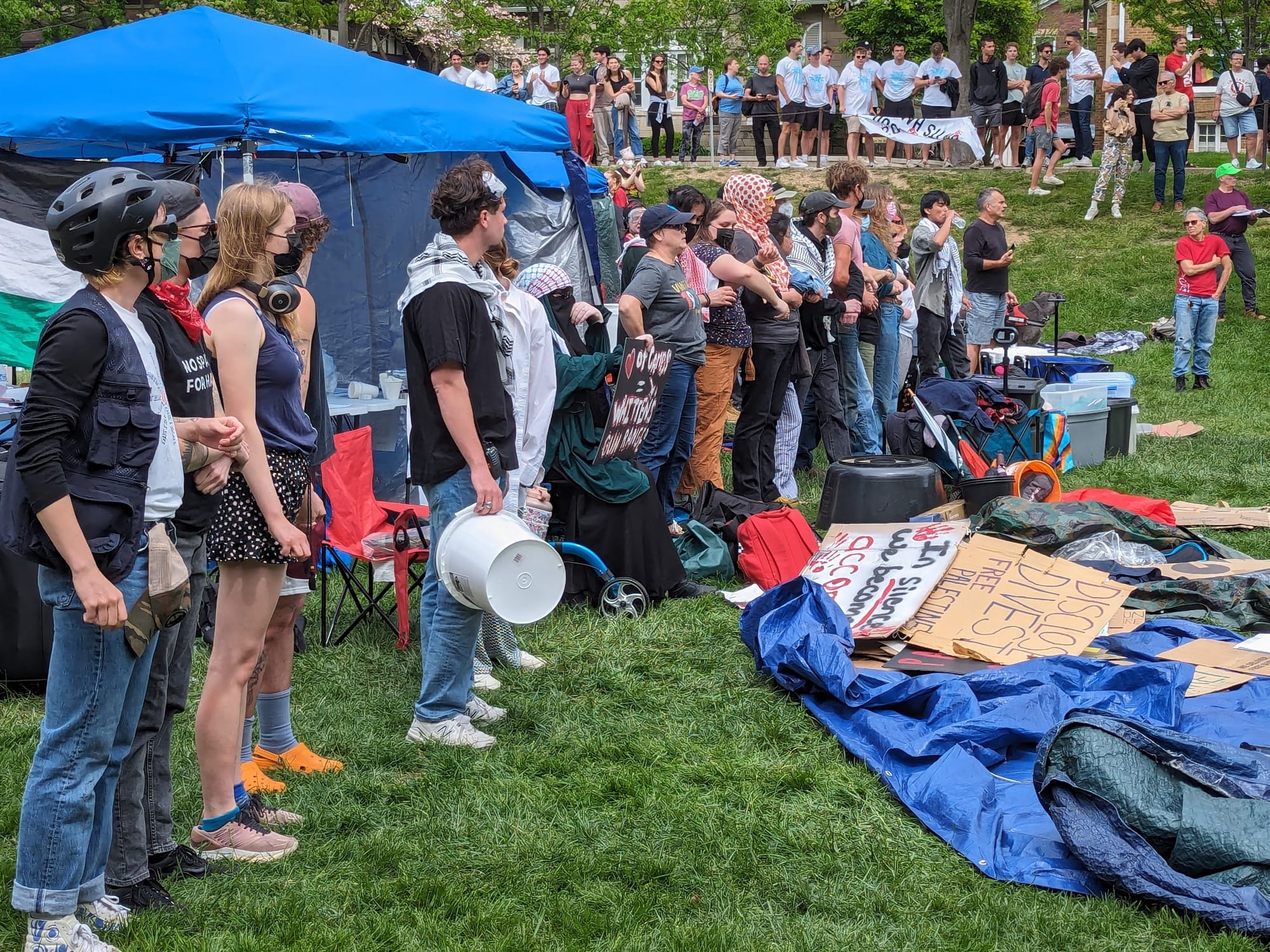
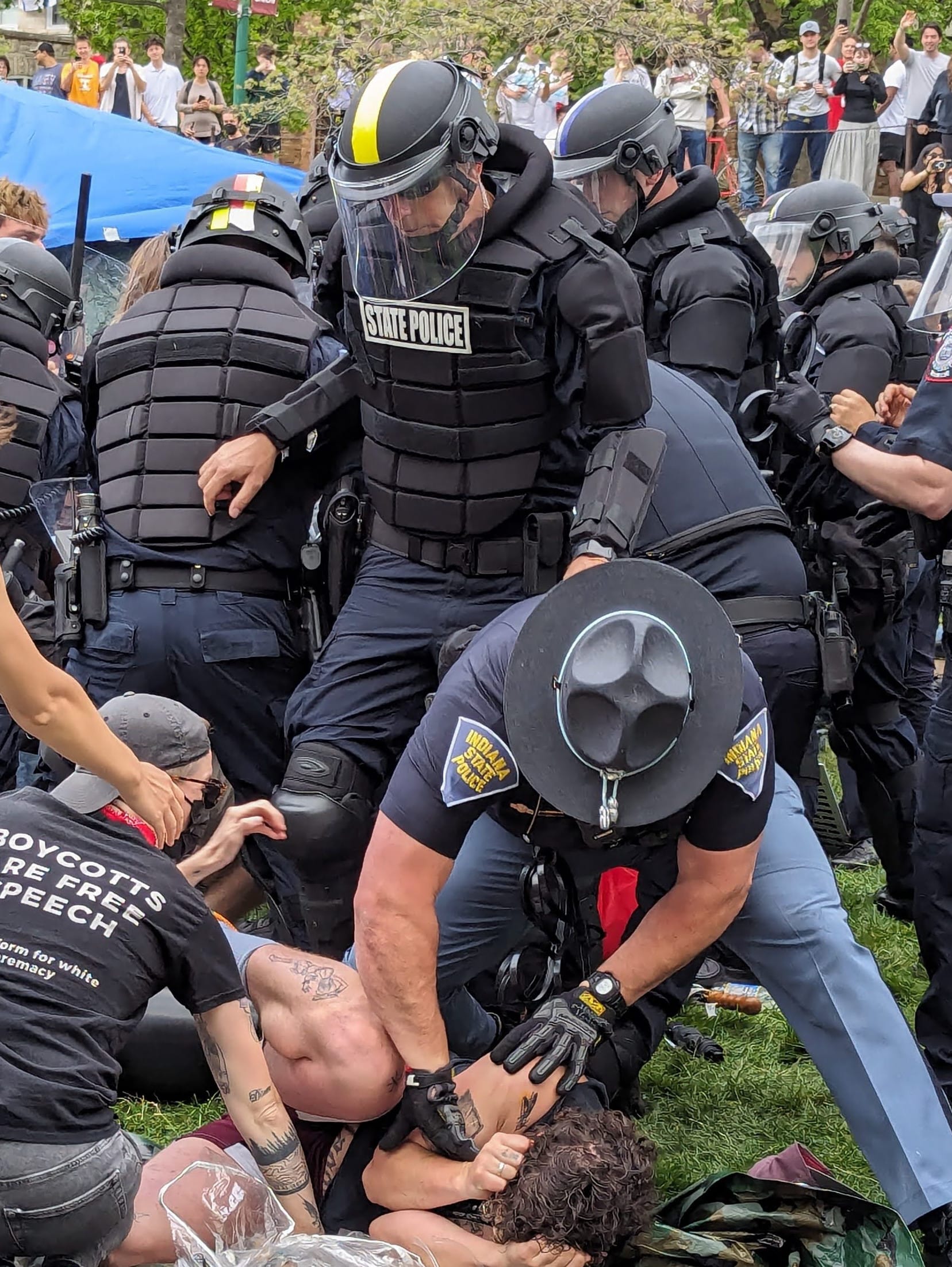

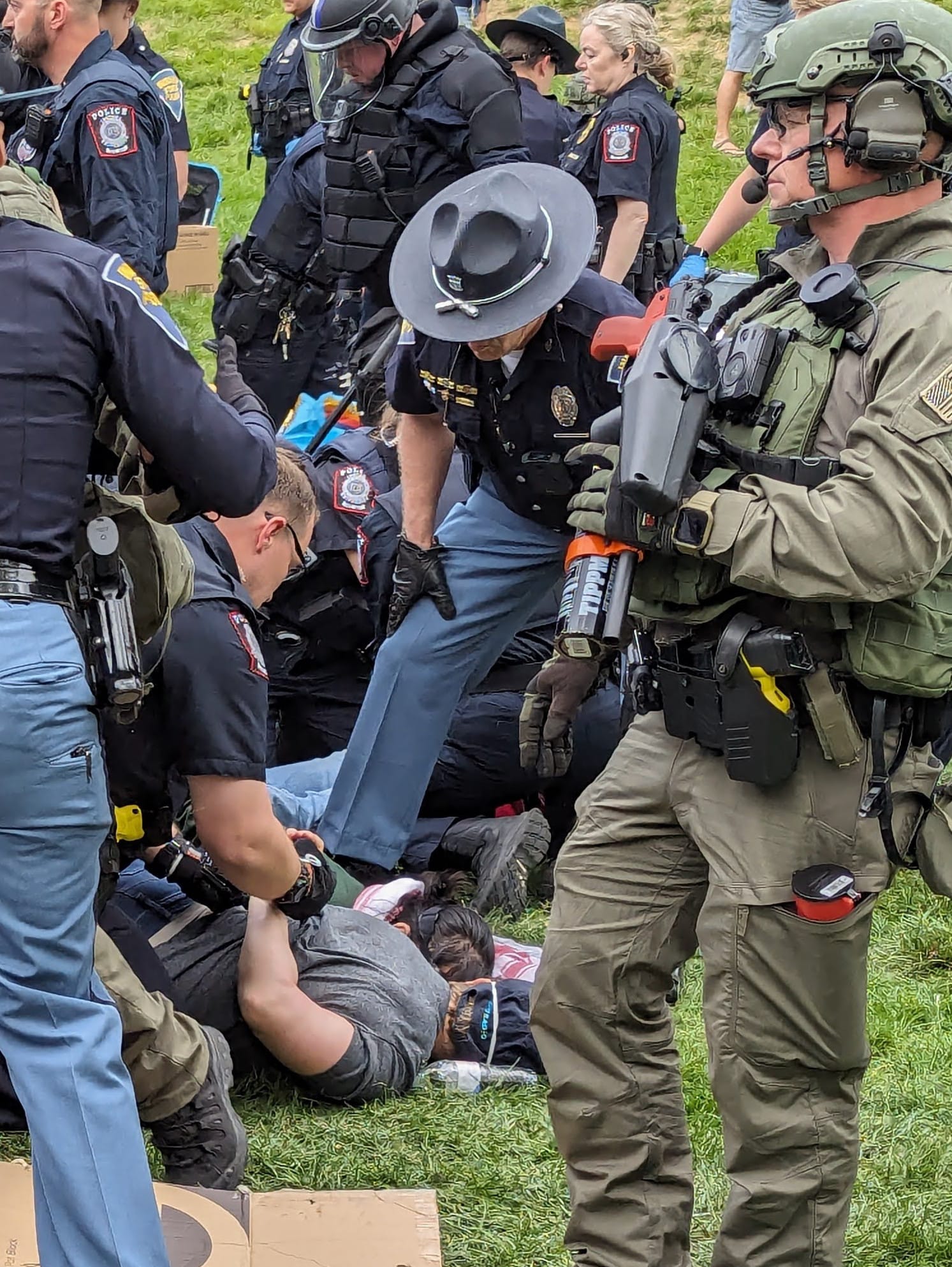
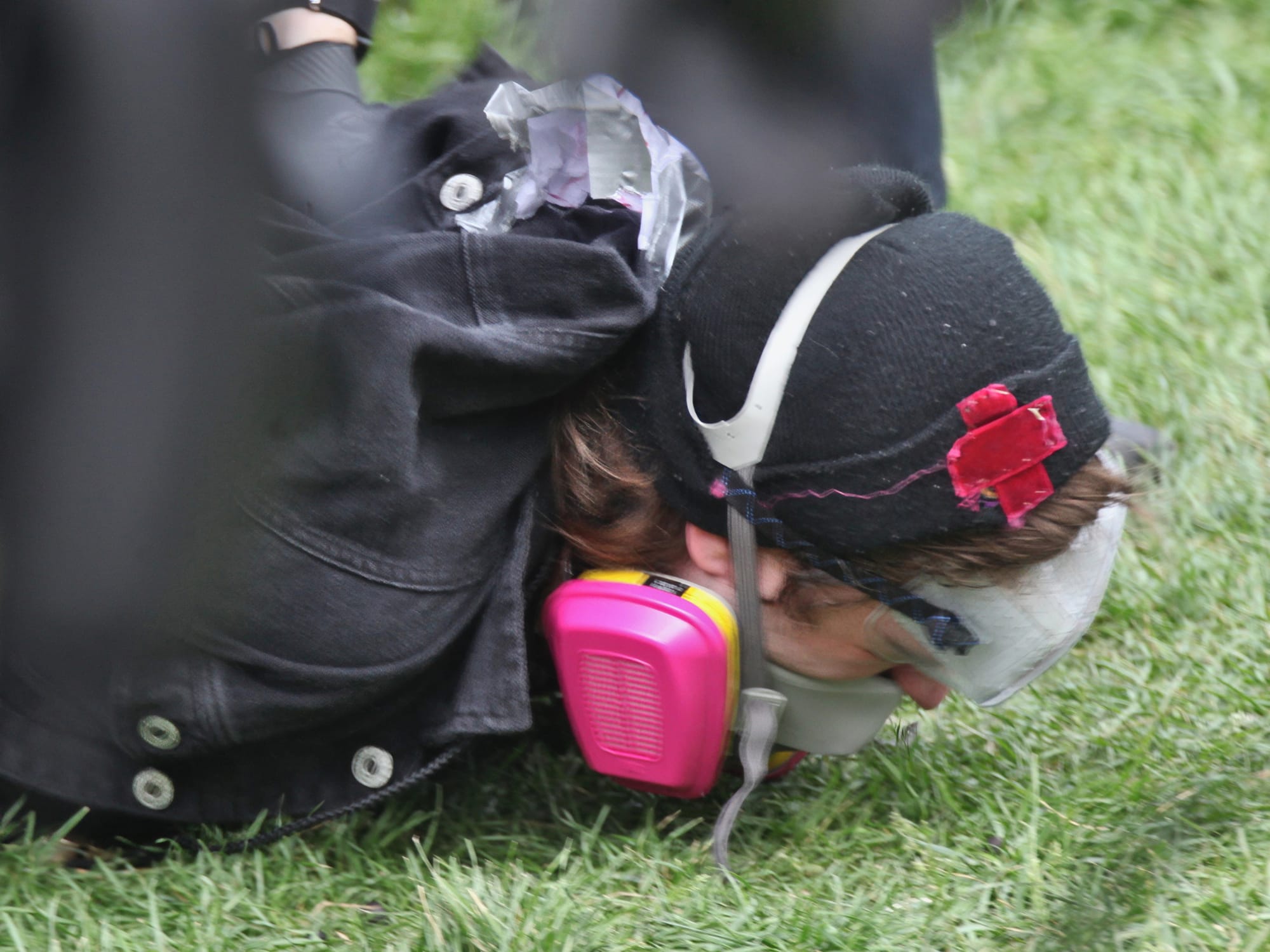


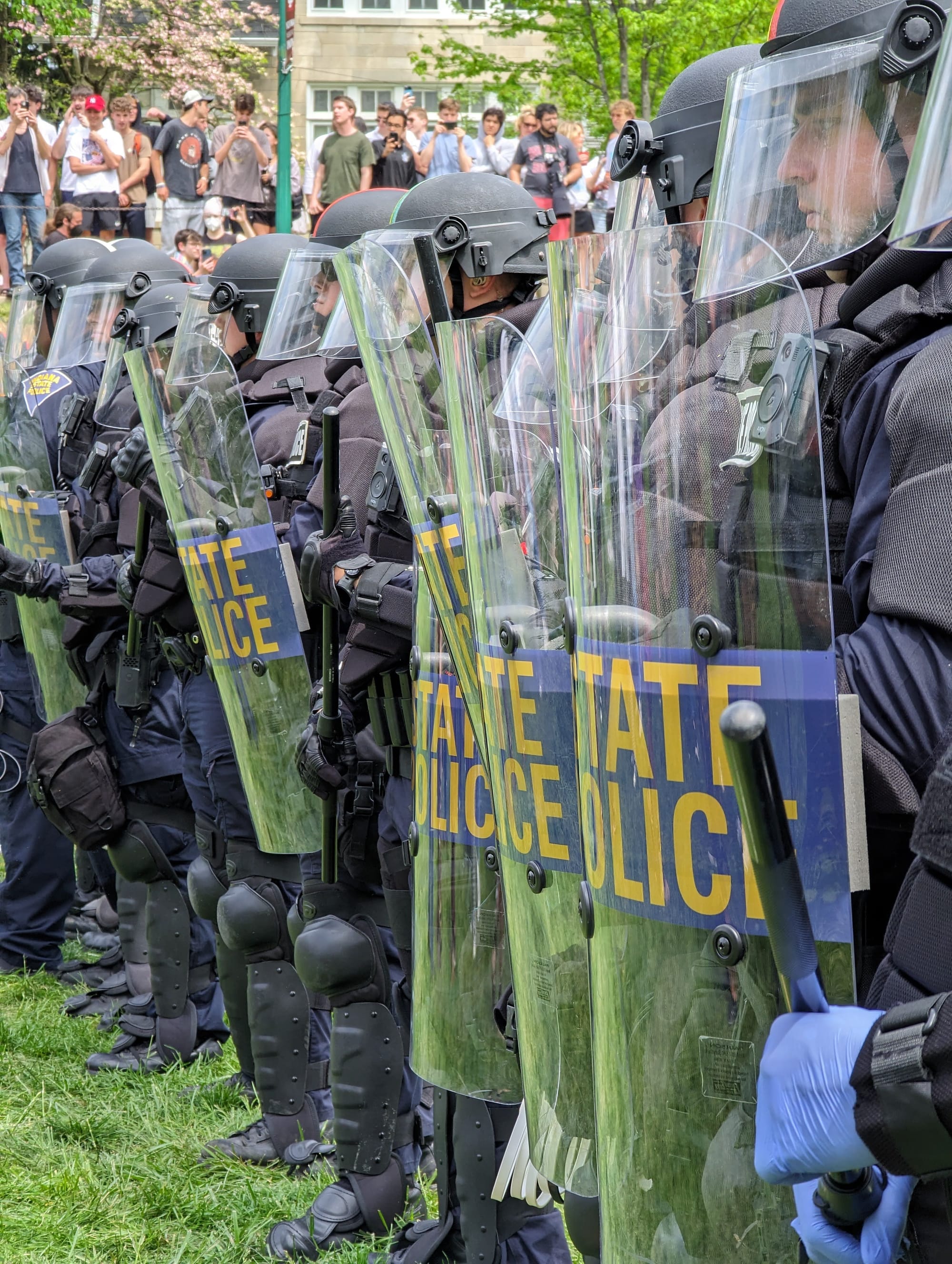
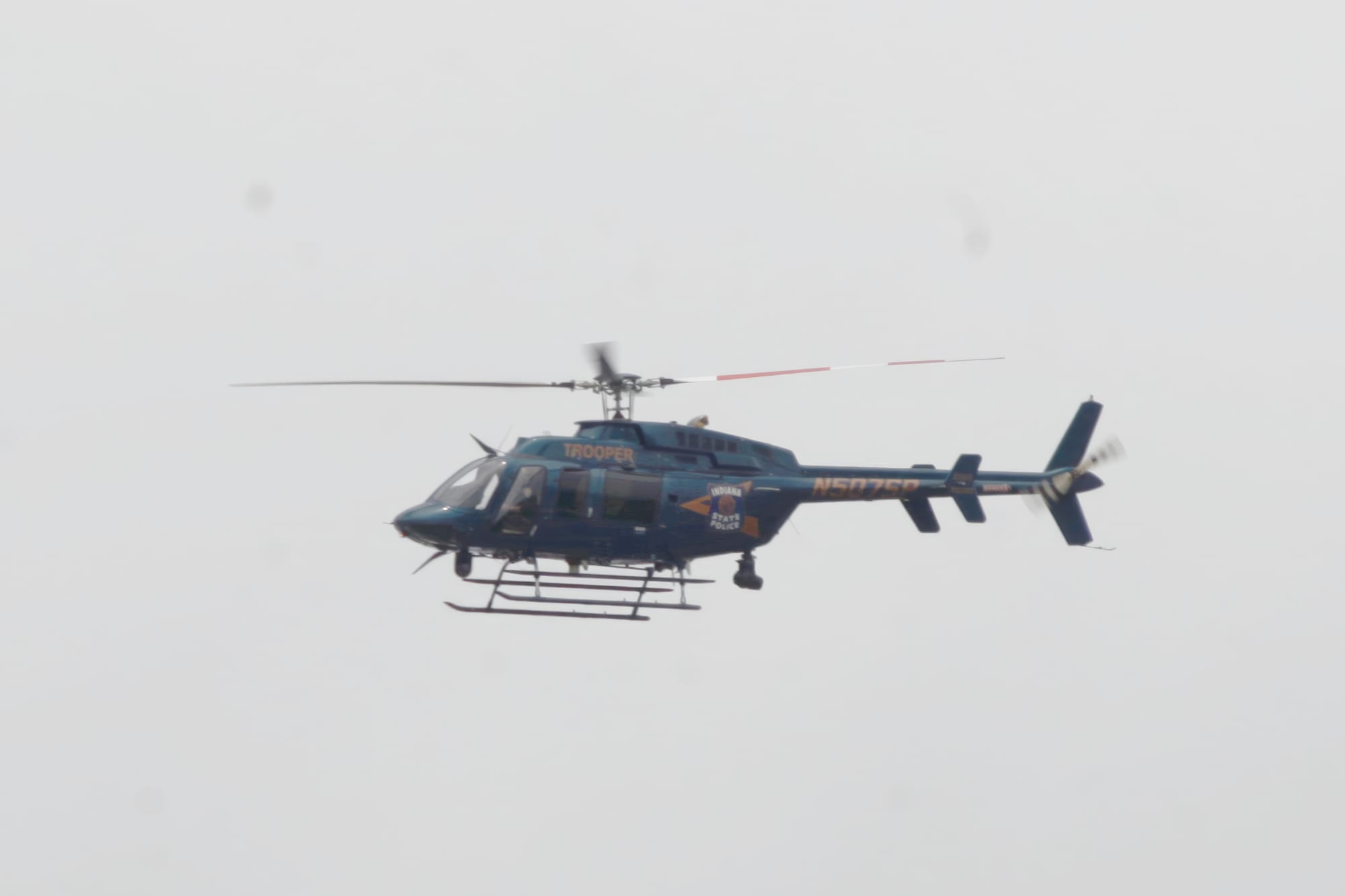

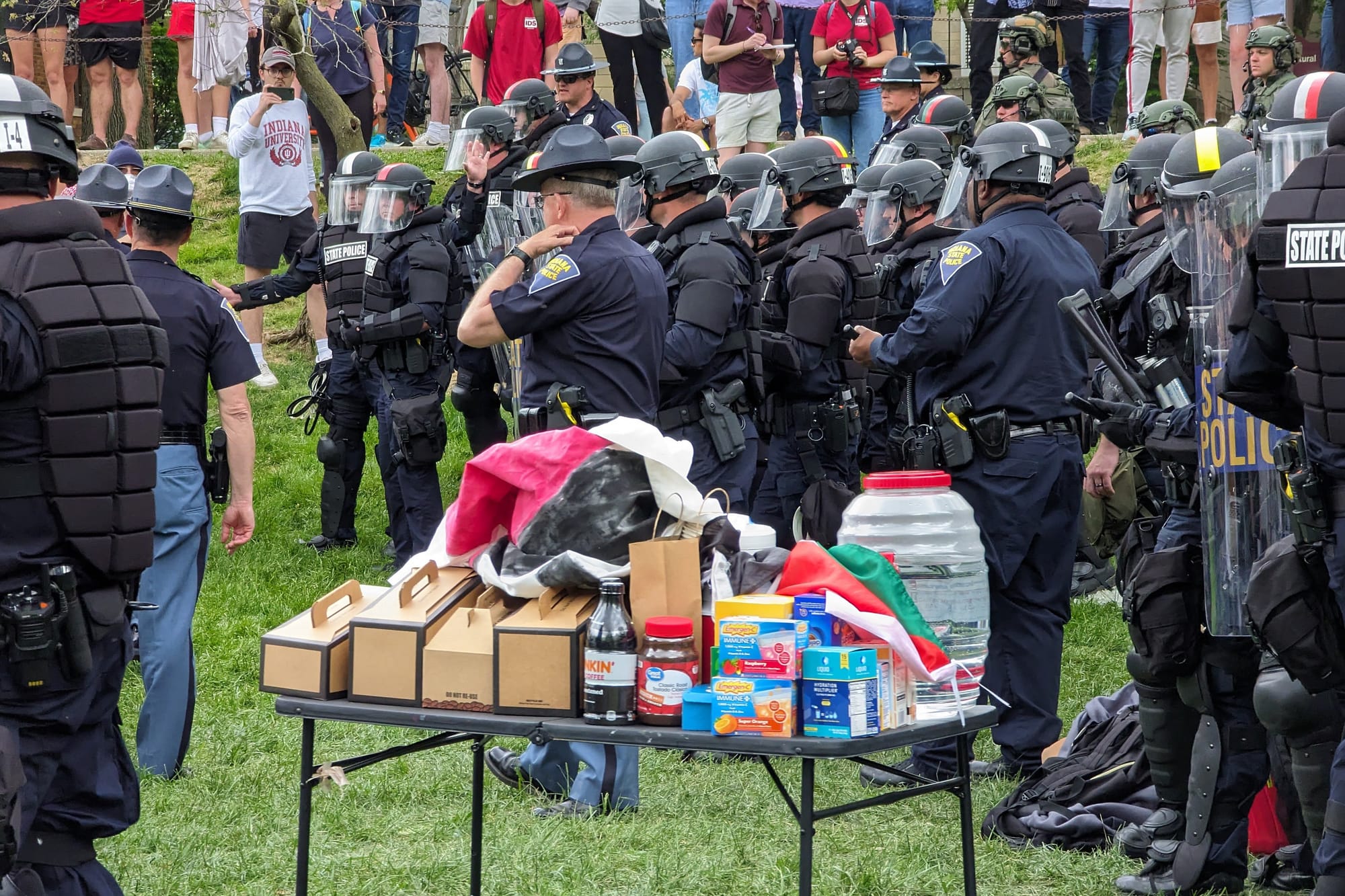
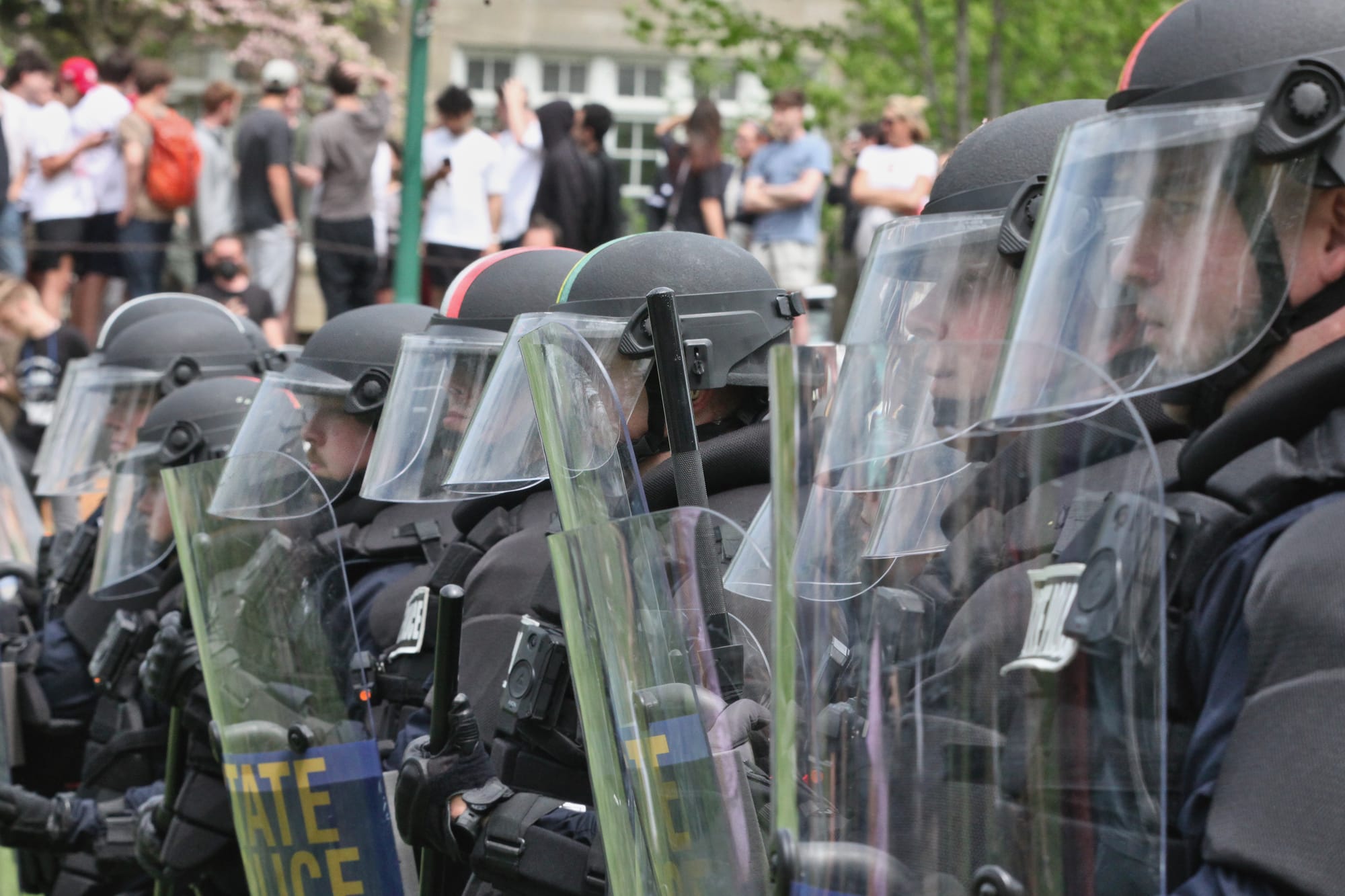
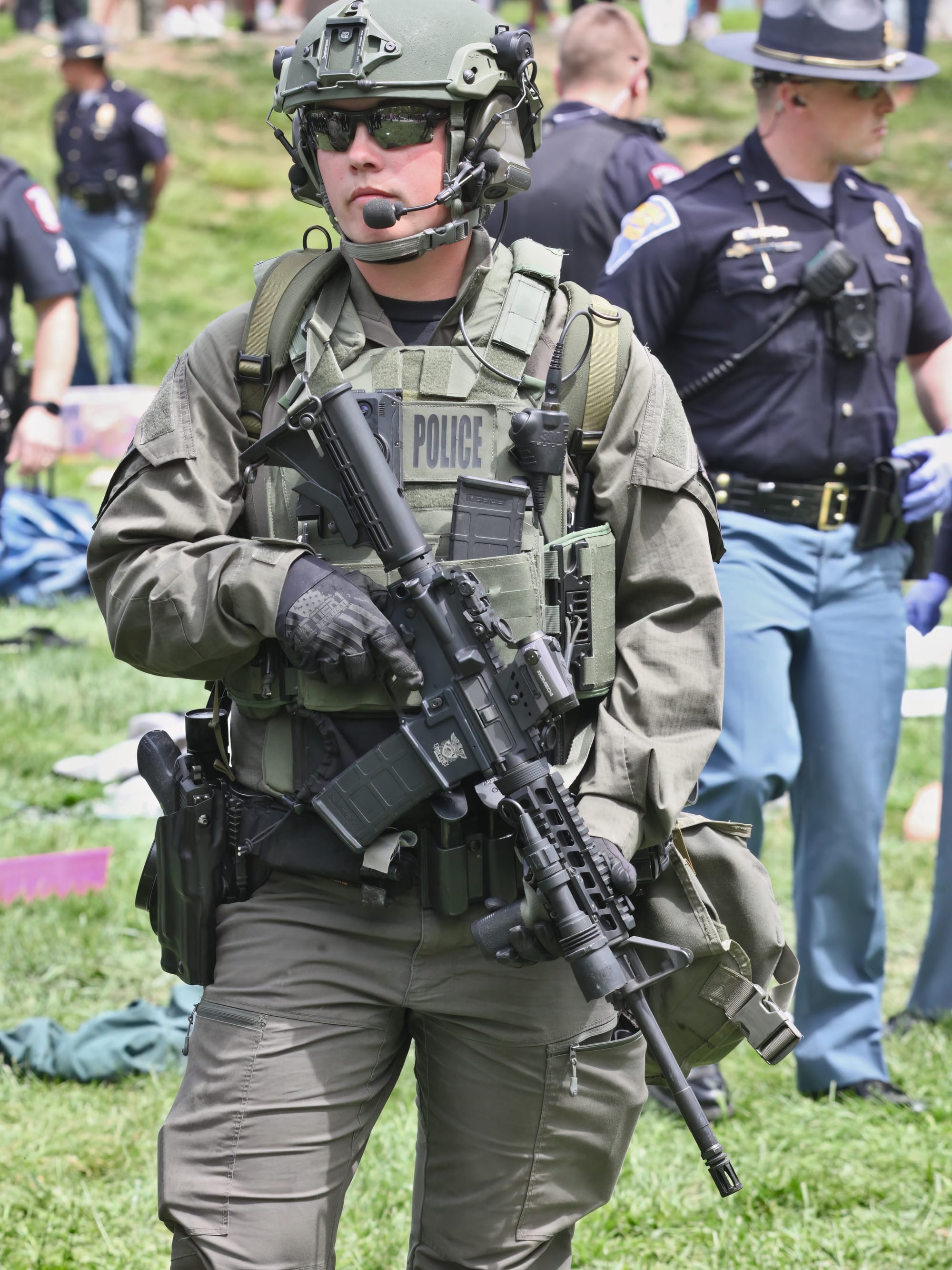
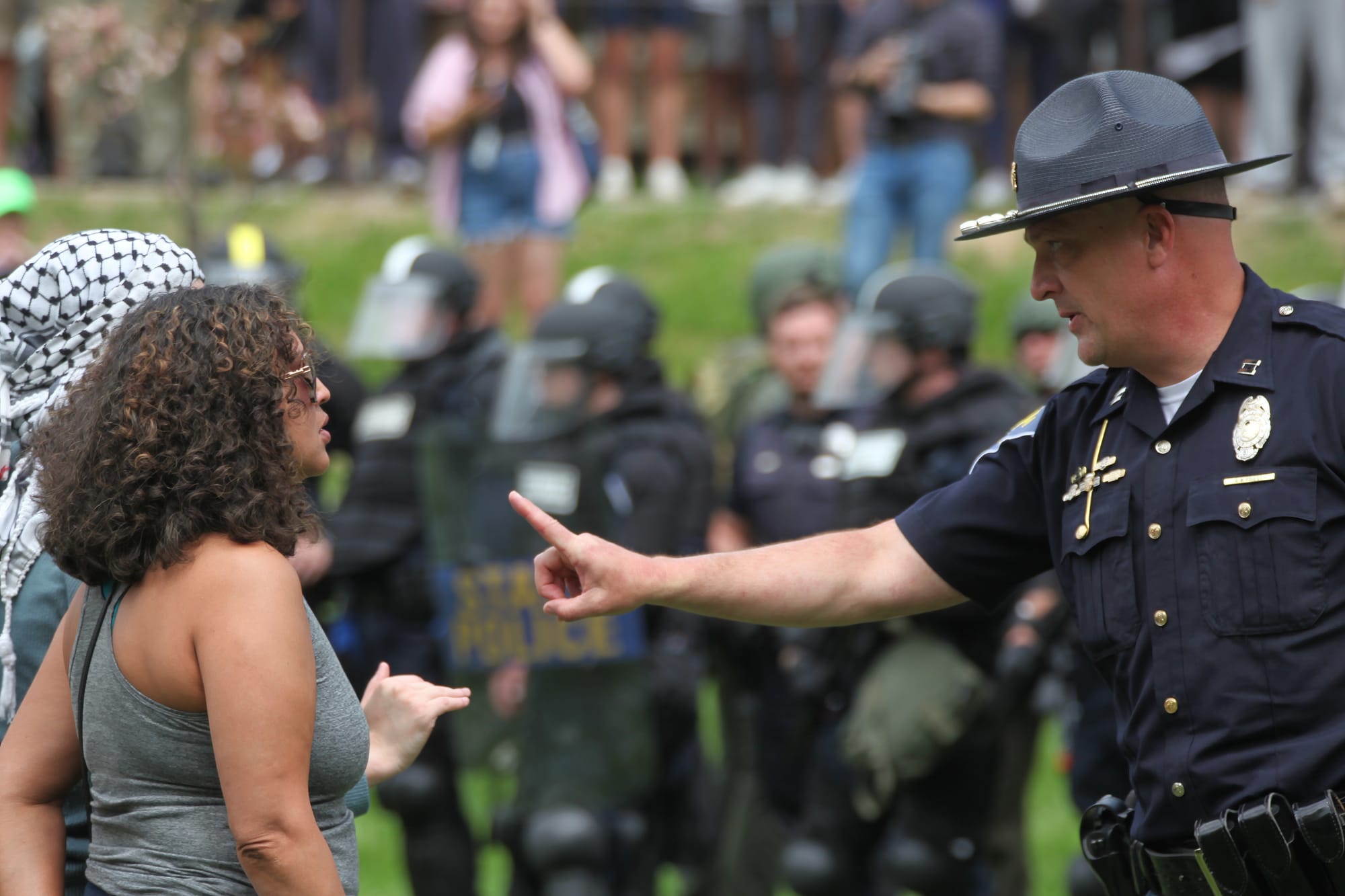
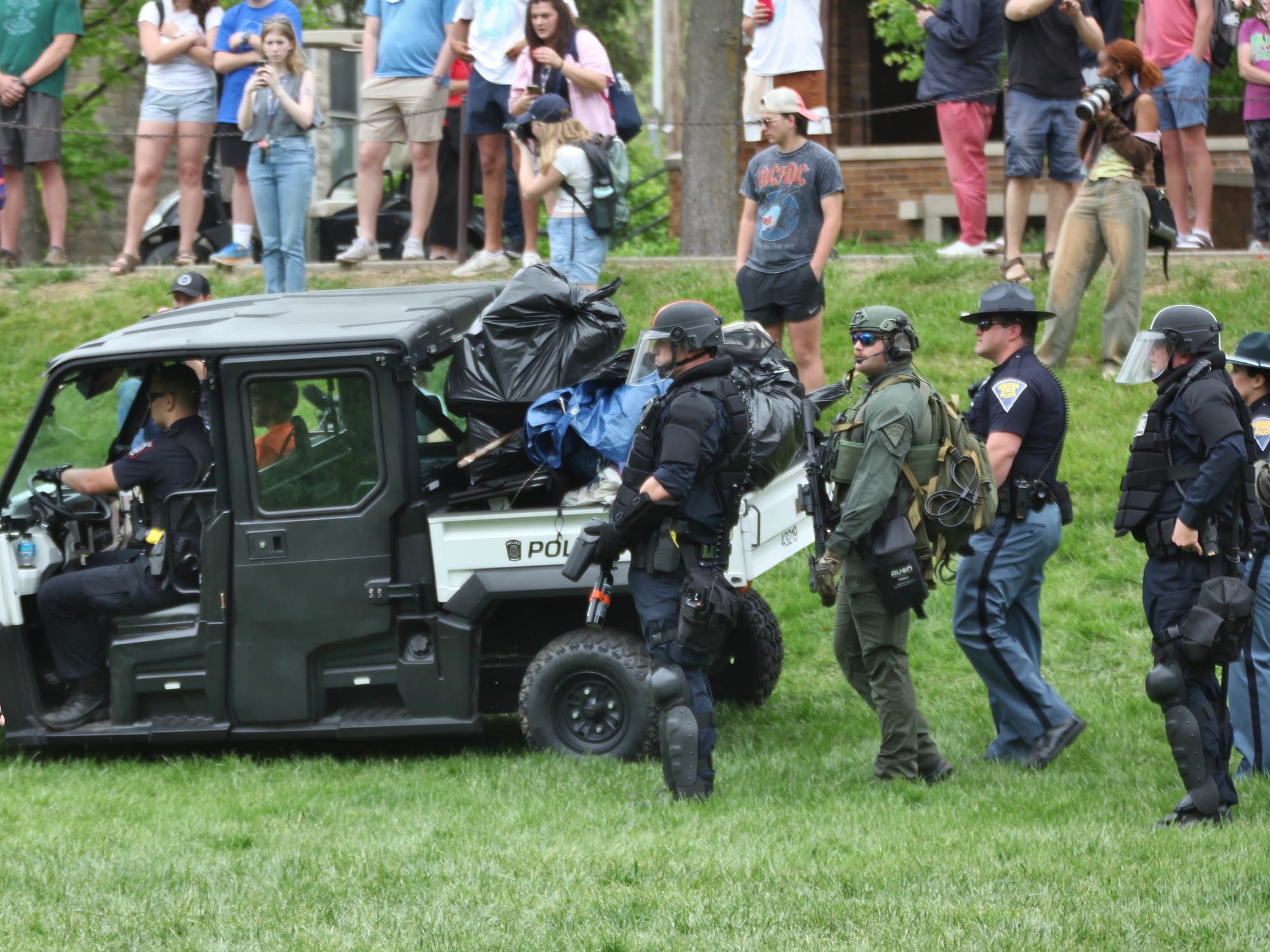
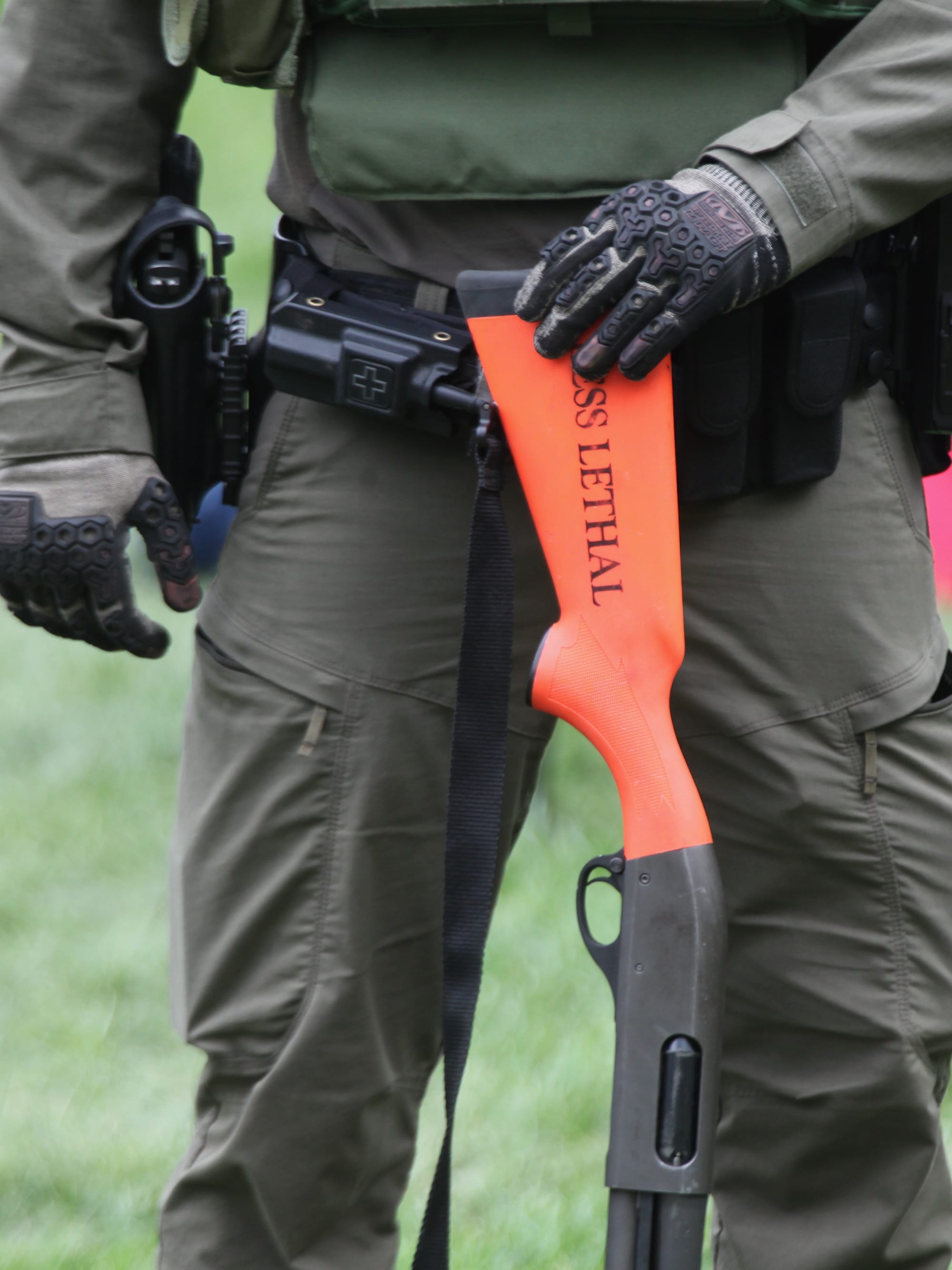
On Saturday, several more demonstrators were arrested in Dunn Meadow on Indiana University’s Bloomington campus, as a part of their ongoing demonstration in support of Gaza.
On Thursday, 33 people were arrested by state police. On both days, the stated objective of the law enforcement action was to remove the tents that activists had set up as a part of their demonstration.
The prohibition against tents during the day in Dunn Meadow reflected a departure from the university’s half-century old policy that explicitly allowed such temporary structures as a part of free assembly on campus.
The fresh set of arrests came after Friday saw no law enforcement activity in Dunn Meadow except a visit from the state police on Friday afternoon, to inform demonstrators that if they did not remove the tents, the action from Thursday would be repeated. The state police officer on the scene stated that he did not want a repeat of Thursday’s events, but indicated that’s what would happen, if the tents were not removed.
The tents to which state police objected on Friday afternoon were set up in Dunn Meadow following a faculty protest that was held at Bryan Hall, on Indiana Avenue, south of the Dunn Meadow. Several faculty held signs calling for the resignation of Indiana University president Pamela Whitten. Among those arrested on Thursday were some faculty, including David McDonald, who is associate professor of folklore and ethnomusicology.
McDonald addressed the Friday morning Byan Hall demonstrators with a bullhorn from across Indiana Avenue, because his arrest came with a 1-year banishment from the campus. Students who were arrested also received a one-year ban.
Tents were carried up Indiana Avenue from Bryan Hall to Dunn Meadow, which started the second day of the pro-Palestine encampment.
The repeat of Thursday’s events did not come until a little after noon, on Saturday. A contingent of state police at least 50 strong arrived in riot gear, backed by state police in fatigues—carrying rifles, high-volume pepper ball launchers, and other “less lethal” weapons. Indiana University police personnel were a part of the force on the ground.
A state police helicopter circled overhead, and at least two police observers were stationed on the roof of the Indiana Memorial Union building. On Thursday, a credible source told The B Square that the personnel visible on the rooftop were equipped with rifles.
On Saturday, the contingent of demonstrators was way smaller than on Thursday, when they linked arms and were able to hold firm for a while against the forward surge by the state police, who pushed with their shields and batons. At the time when the police made their surge on Saturday, maybe three dozen demonstrators were on hand to resist the forward progress of the police.
Arrests came when police were surging forward. Arrestees were zip-tied and led off. The B Square counted at least 10 people who were arrested on Saturday, including one of the organizers with Indiana University Divestment Coalition, Bryce Greene, who is a graduate student.
After the police line had moved the demonstrators back behind the tents and awnings, the dismantling of structures began. When it appeared that the police had achieved their objective of dismantling the structures, demonstrators chanted at police telling them to go home.
Police were not ready to leave. A few rolled up tarps and other gear that had been moved out of the encampment, and placed between the sidewalk and the Campus River, just before the police action began, were identified as a security concern.
Once that material was carted off by demonstrators, the police executed a deliberate withdrawal to their vehicles parked on Woodlawn Avenue.
The numbers of demonstrators had swelled when word spread that another police action had started. By the time police exited Dunn Meadow, at least 200 demonstrators had gathered.
Several of the group then headed across campus, to Fee Lane, then north to Gladstein Fieldhouse, where they believed that arrestees were being processed. On arrival, it did not appear that there was any activity there, so they headed south along Indiana Avenue, arriving back in Dunn Meadow around 2:15 p.m.
Bloomington police?
Of interest to Bloomington residents is whether the city’s police force has been involved in the Dunn Meadow law enforcement action.
At a town hall meeting that took place mid-morning at the downtown location of the Monroe County Public Library, Bloomington mayor Kerry Thomson said that Bloomington’s police were not involved in any action on the university campus.
Thomson said, “Our police have not been involved on the IU campus.” Thomson confirmed to the B Square after the town hall that she had asked Bloomington police not to be involved.
Thomson told the town hall audience, “We will only be there, if there is an extreme safety issue that happens, that necessitates backup.” Thomson continued, “We will not be advancing on free speech. We will not be advancing on protesters.”
In her remarks made to the town hall audience, Thomson reported that she has talked to Indiana University president Pamela Whitten. Thomson said, “[Whitten] is committed and gave me her word, that they are going to continue to dismantle the encampment—but protesters are allowed. And she will be supporting the free speech.”
Thomson continued, saying, “I have been in hourly conversations with our police—they are also committed to de-escalation and conversation before any force. And they have a principle of not being up there as well.”
The town hall was hosted by Thomson, state senator Shelli Yoder, Monroe County councilor Jennifer Crossley, and Bloomington councilmember Isak Asare.
Reaction to arrests
State representative Matt Pierce, who observed the Friday protest at Dunn Meadow issued a statement sharply critical of IU president Pamela Whitten’s handling of the Dunn Meadow protests.
Here’s an excerpt:
It’s ironic that University leaders who continually use the excuse of potential violence to suppress speech it opposes invited onto campus state police with military-style weapons that included what appeared to be snipers stationed on rooftops to force a physical confrontation with protesters.
This reckless decision is indefensible. Does President Whitten not remember Kent State?
President Whitten must correct this grievous violation of First Amendment rights by requesting all criminal charges against those arrested be dropped and rescinding any year-long bans from campus that have been issued against the protesters.
It’s time for President Whitten to put an end to her amateurish handling of campus protests before someone gets seriously hurt.
IU law professor Jody Madeira, who attended the Bryan Hall faculty protest on Friday morning, as well as the Saturday morning town hall, posted a statement on Facebook as a candidate for Monroe County commissioner:
The right to express dissent through nonviolent means is a precious right that is the core of our democracy. I’m profoundly saddened by Indiana University’s reaction to the peaceful student protests in Dunn Meadow. Calling in the state police and arresting nonviolent demonstrators only harms our community and does not make us safer.
In a statement to The B Square, Madeira added:
When your university calls in the state police for a nonviolent protest and summarily bans protesters from campus, it’s a great idea to call in the lawyers.
Measures are being taken to ensure that those affected personally by IU’s aggressive response to nonviolent protest activities can obtain legal help.
Photos: April 27, 2024
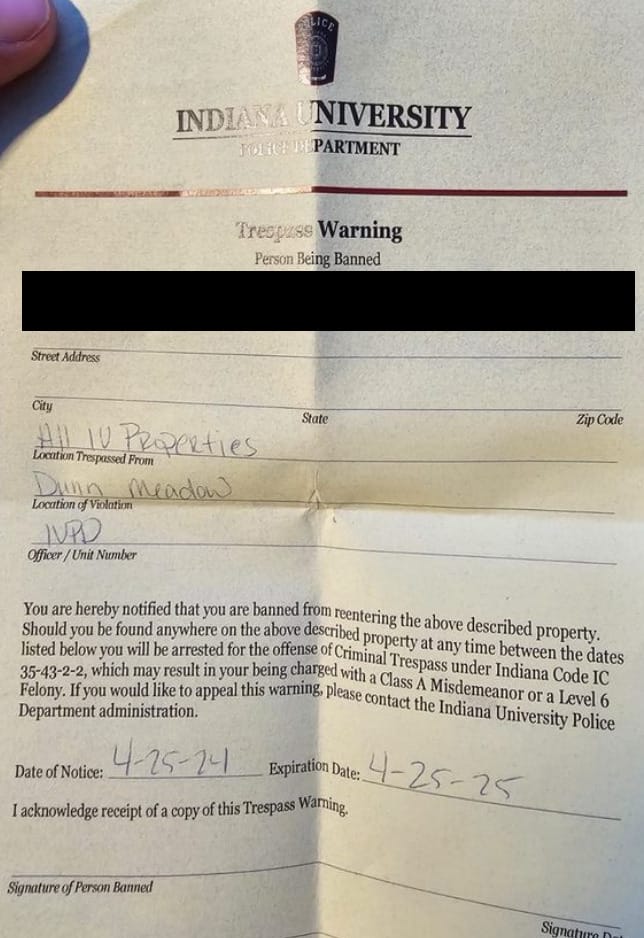

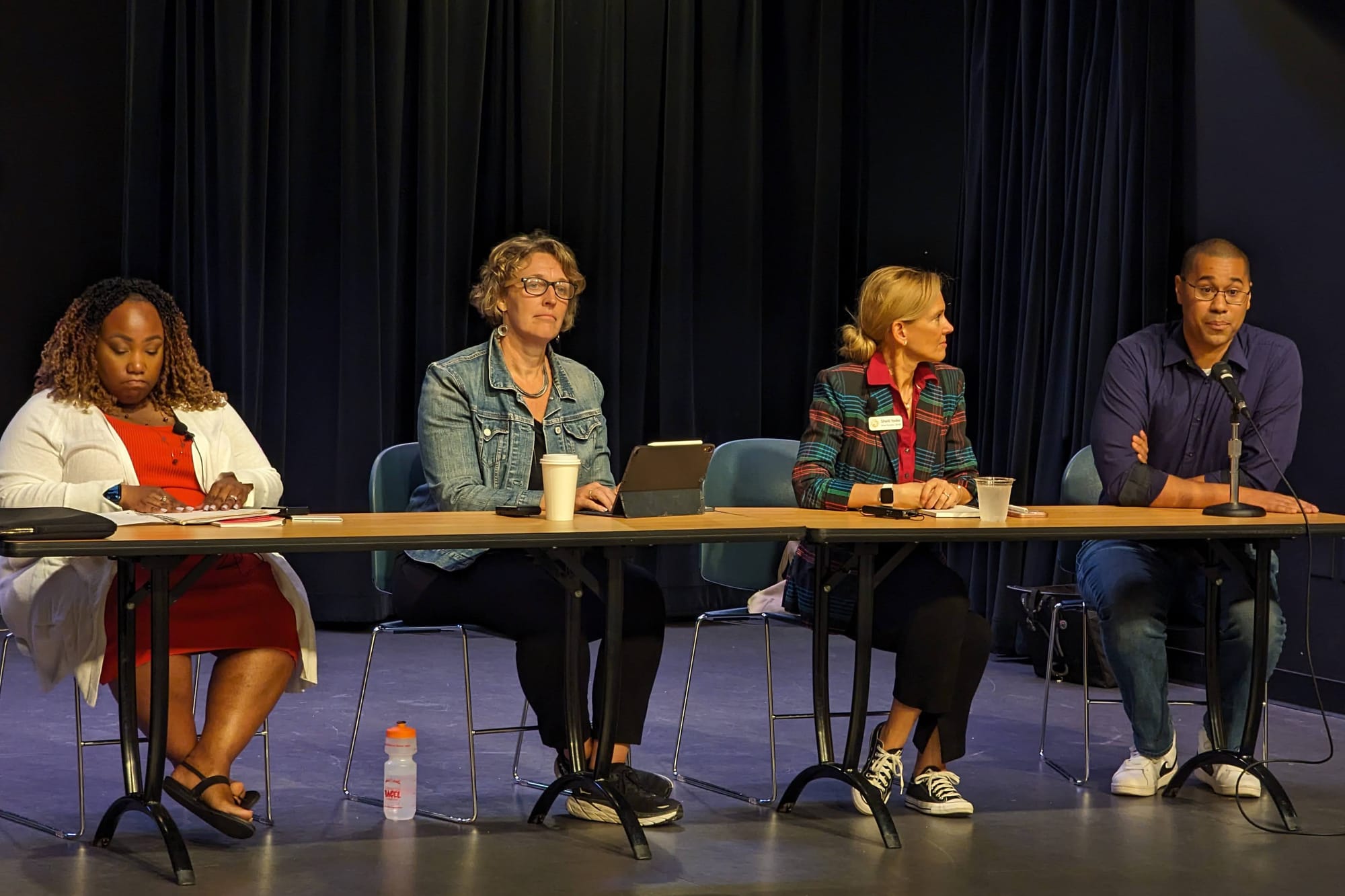



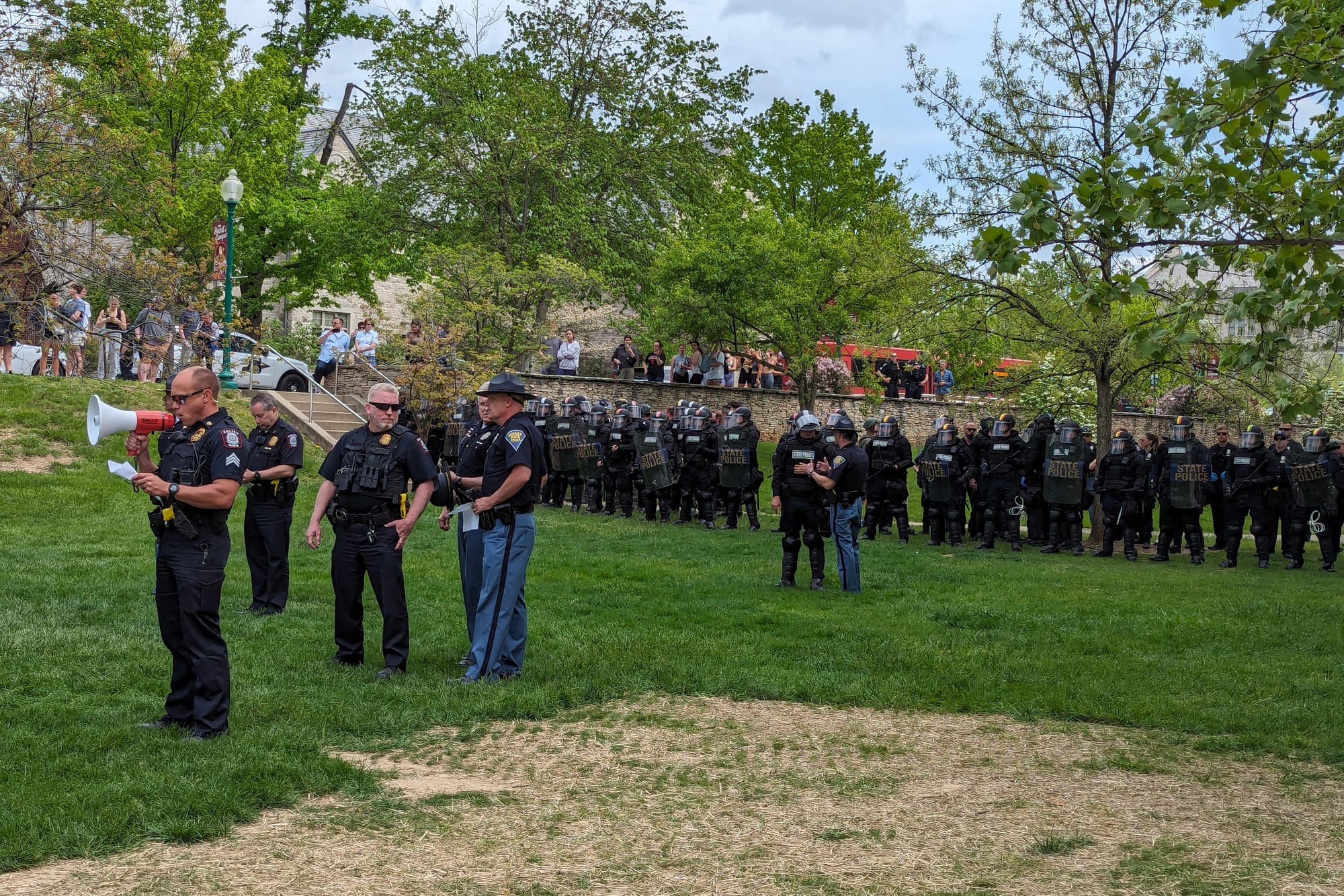


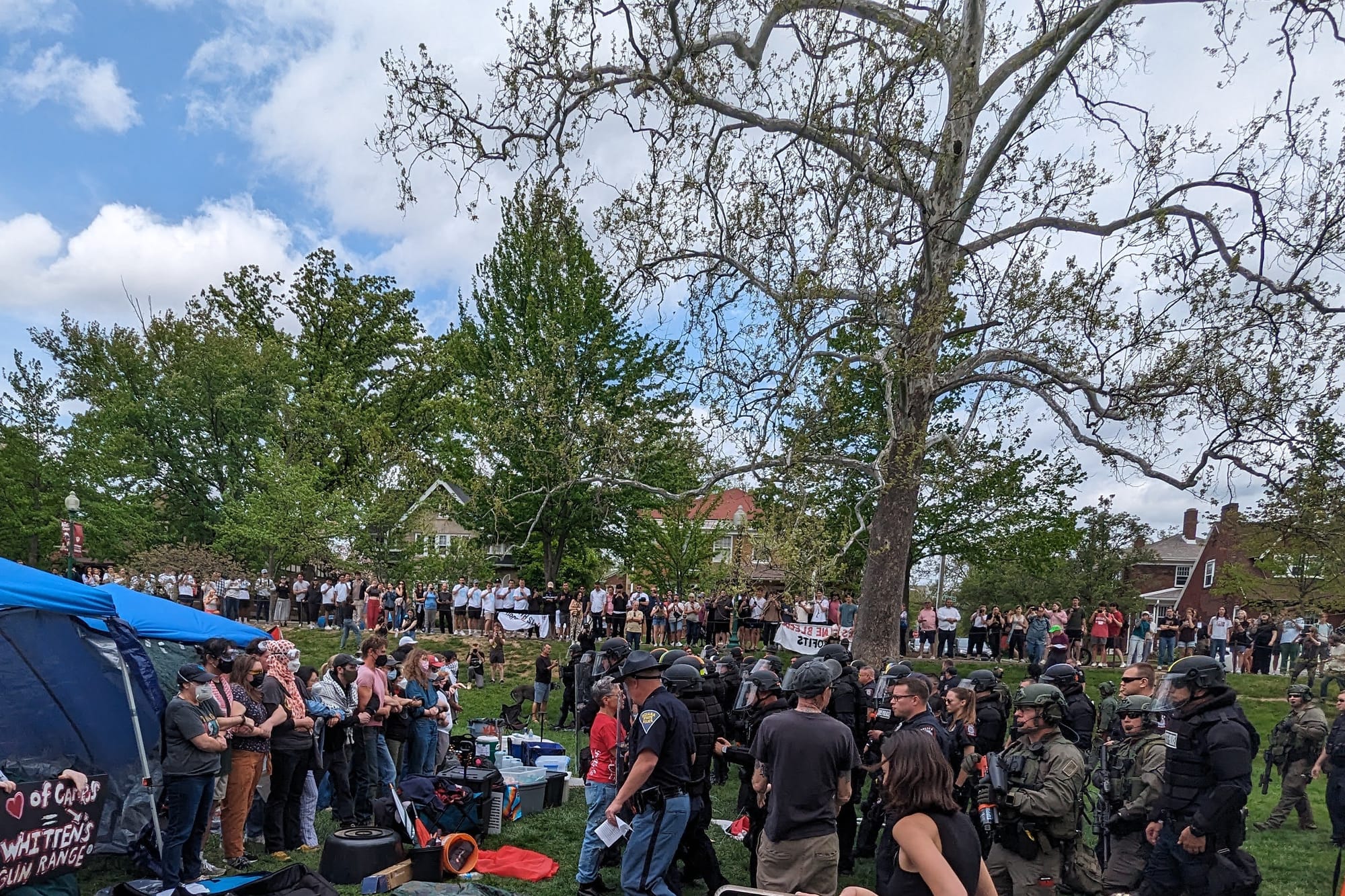


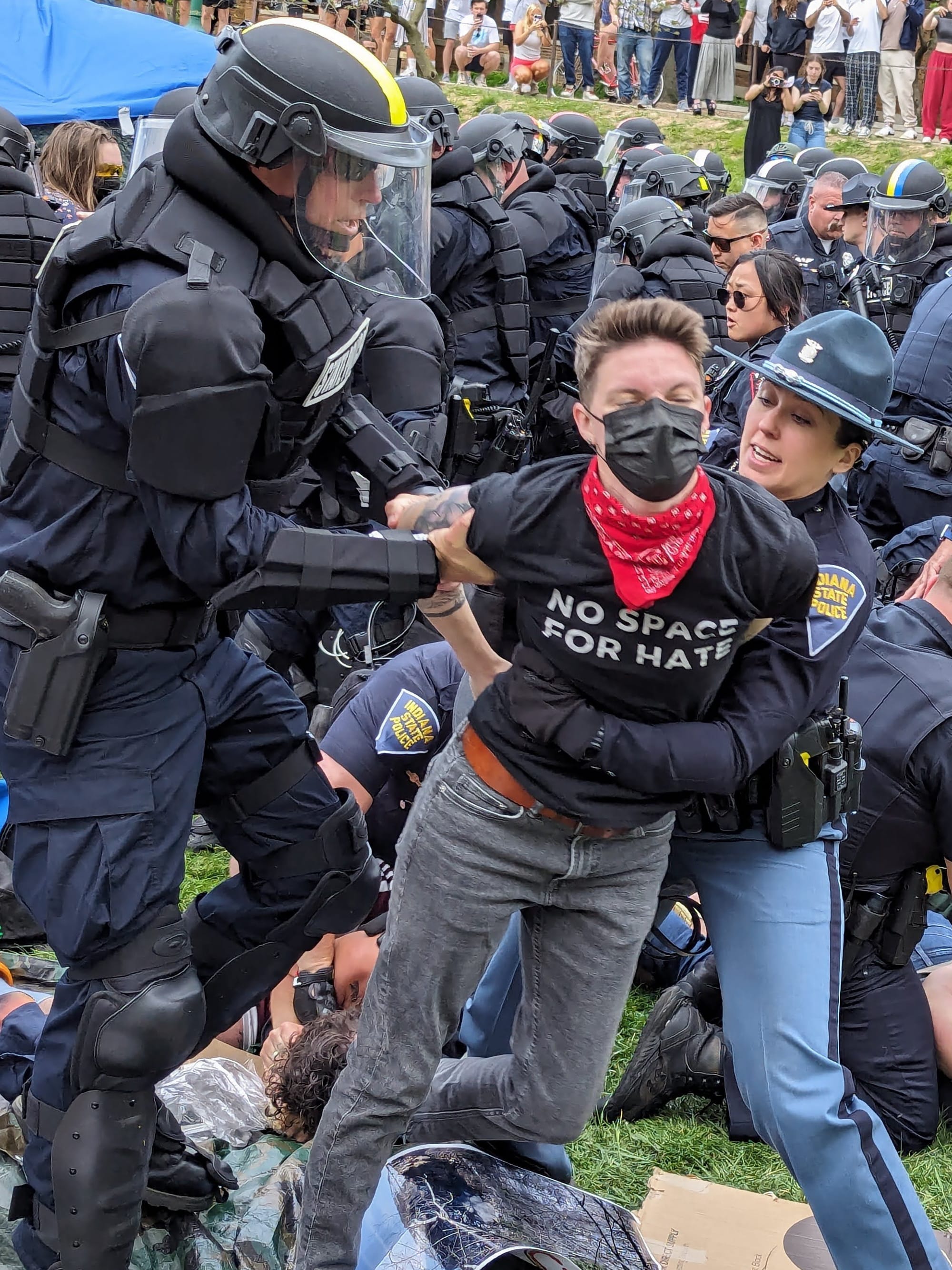

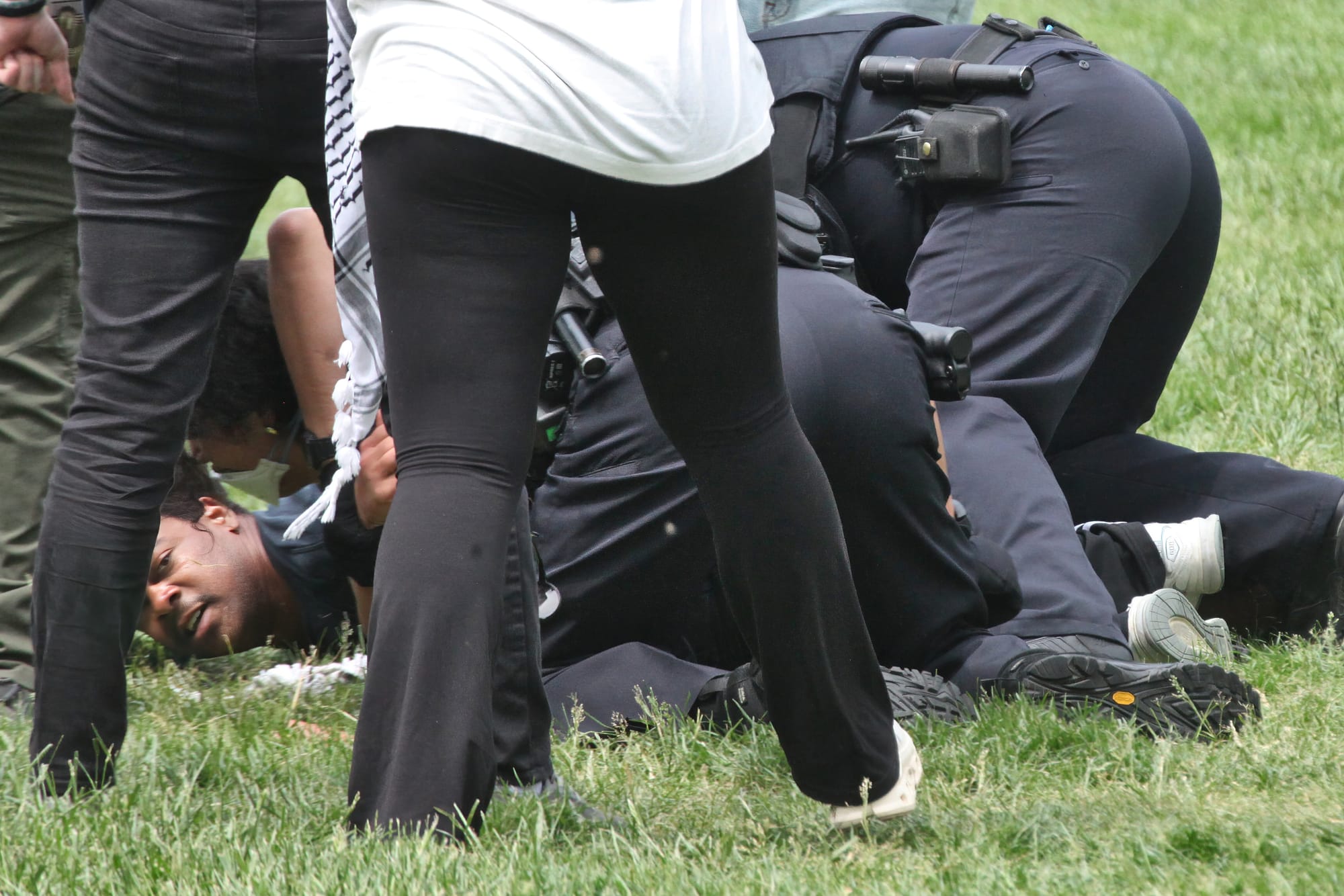

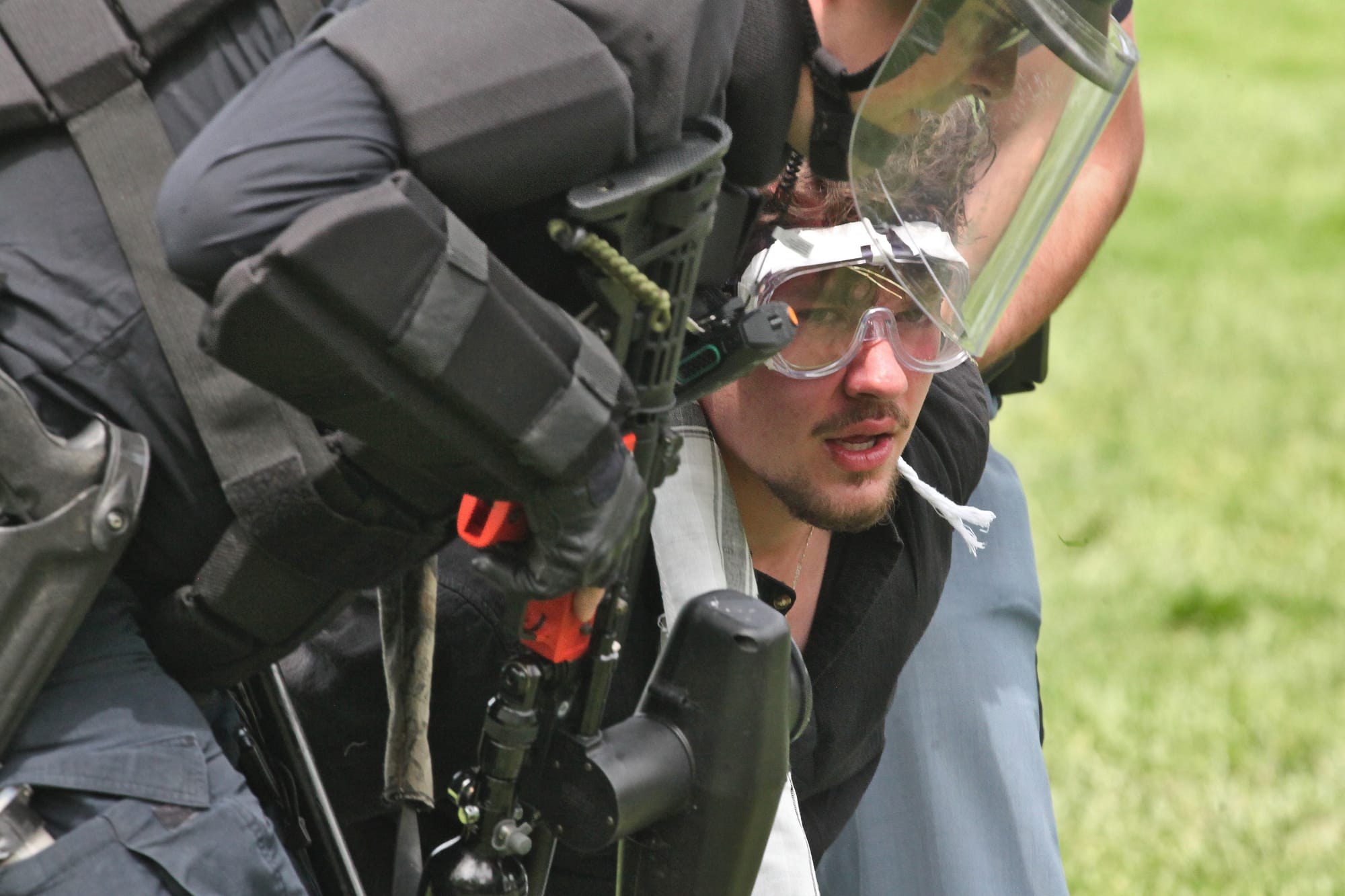




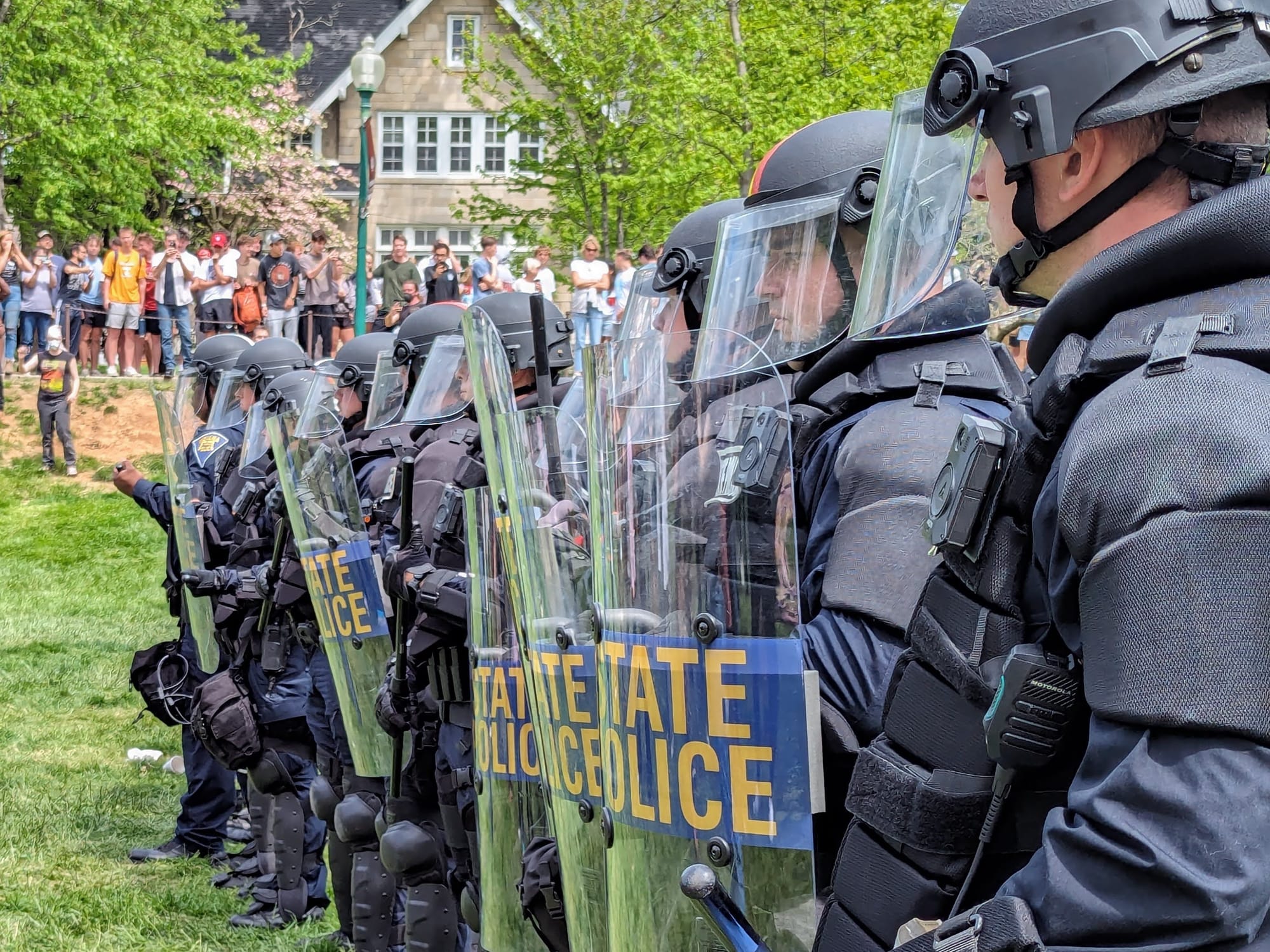


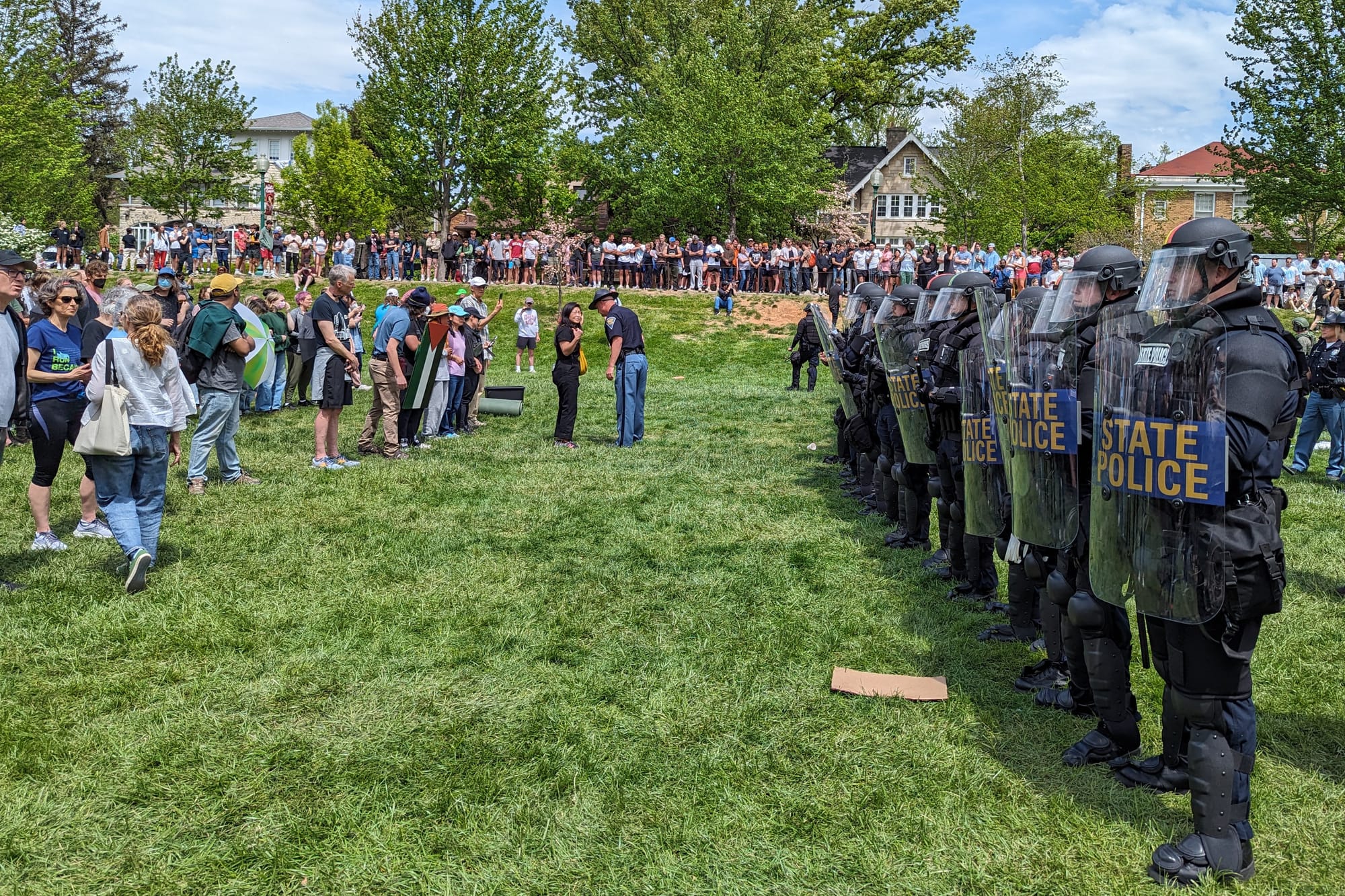
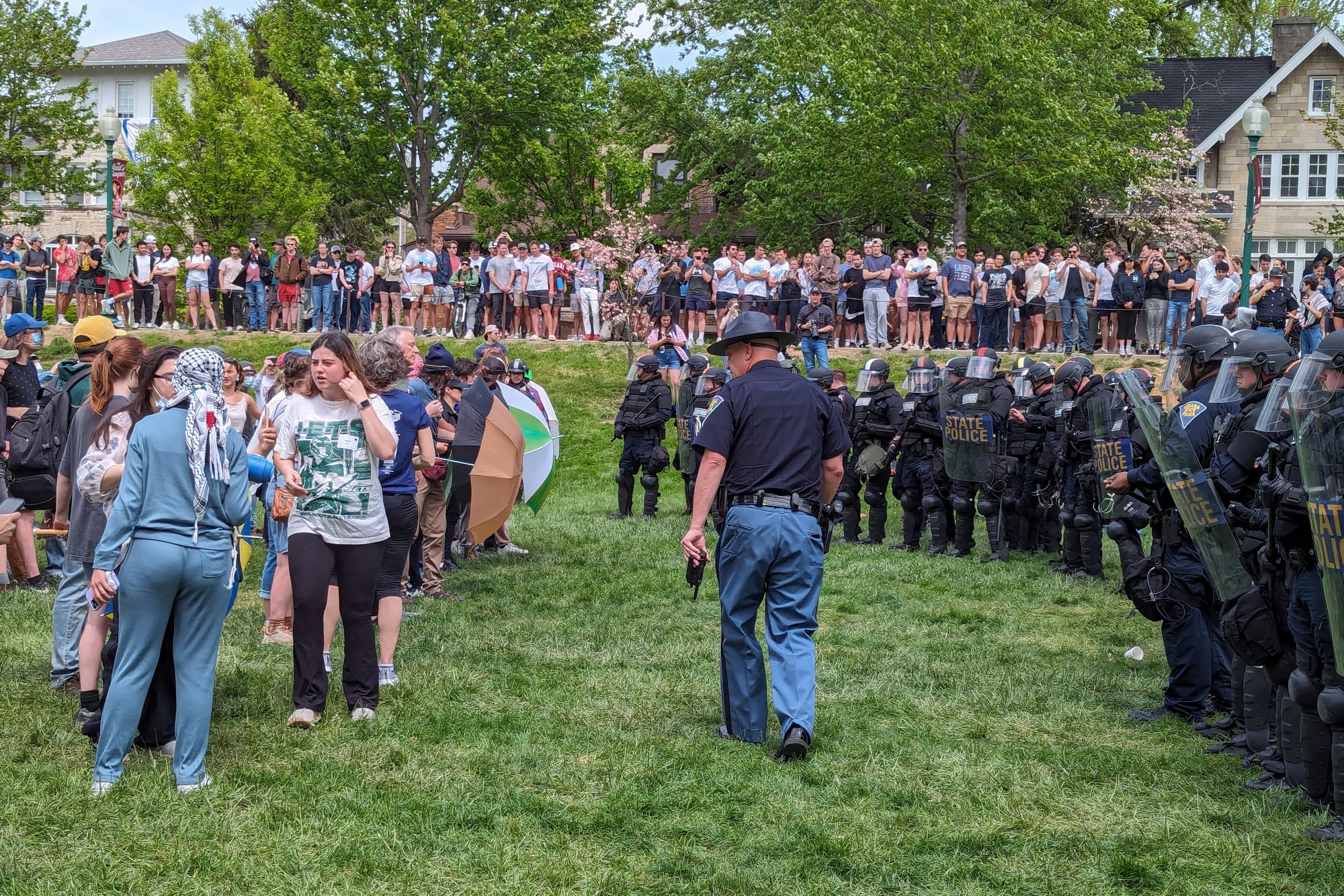
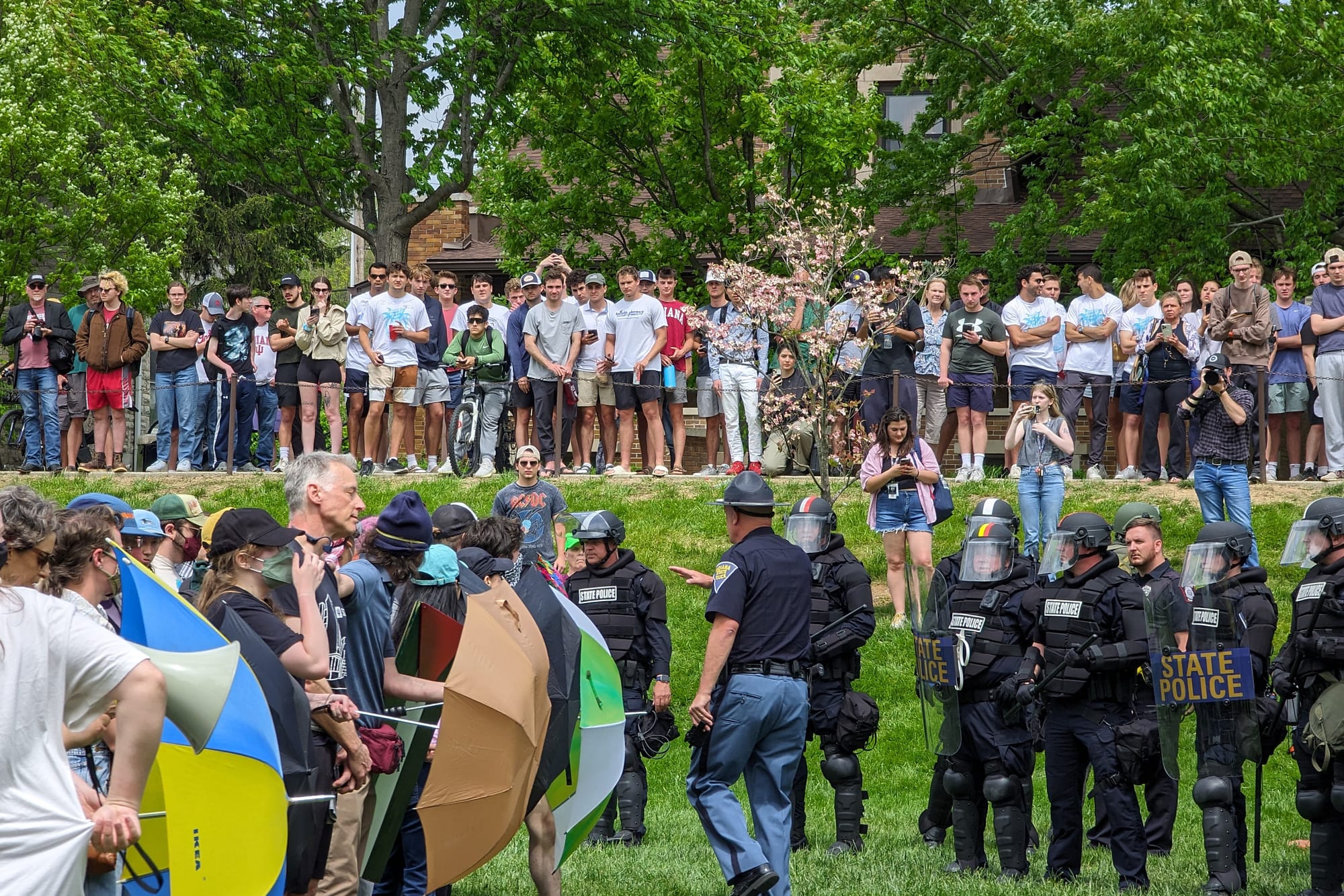
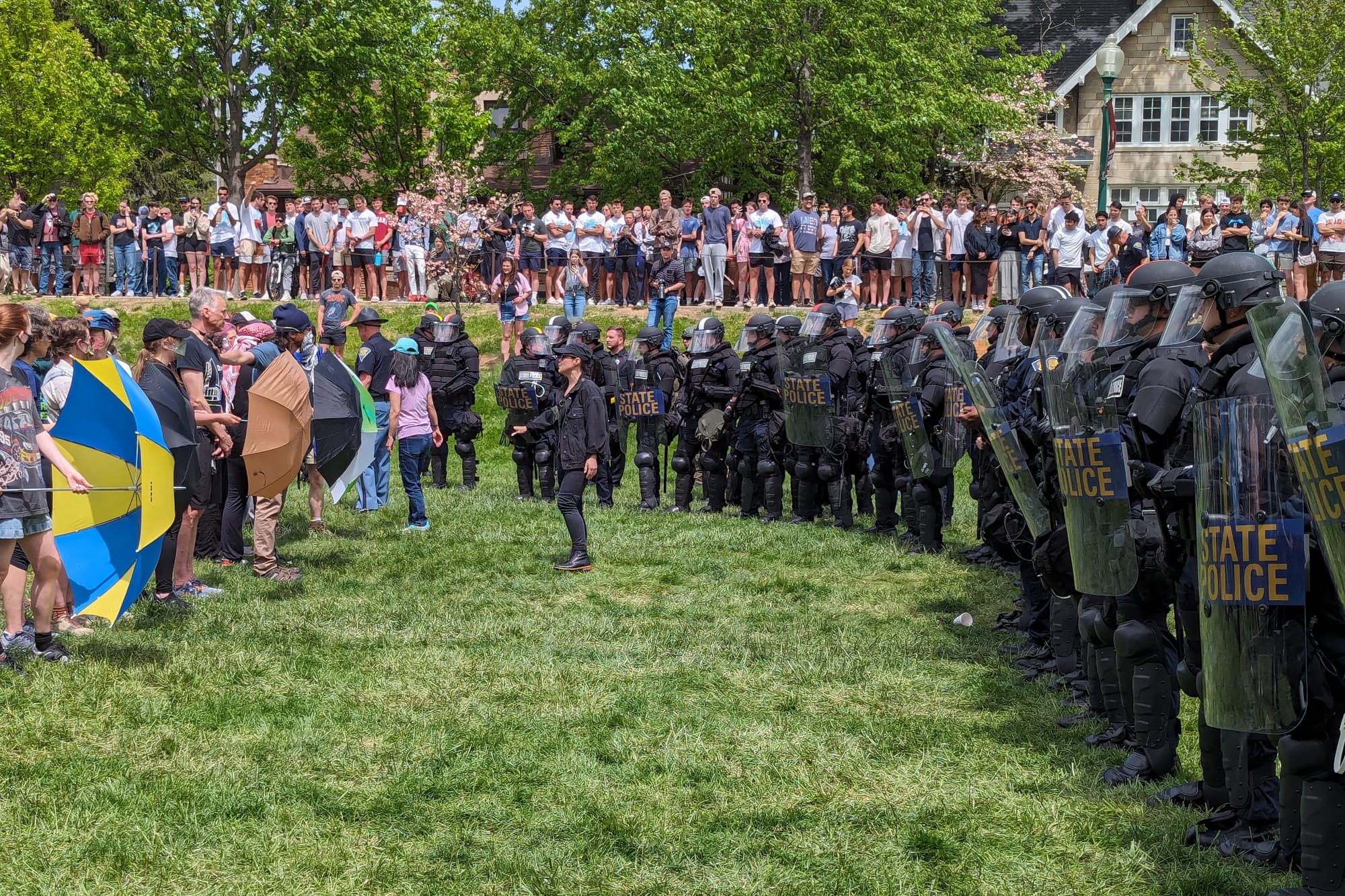





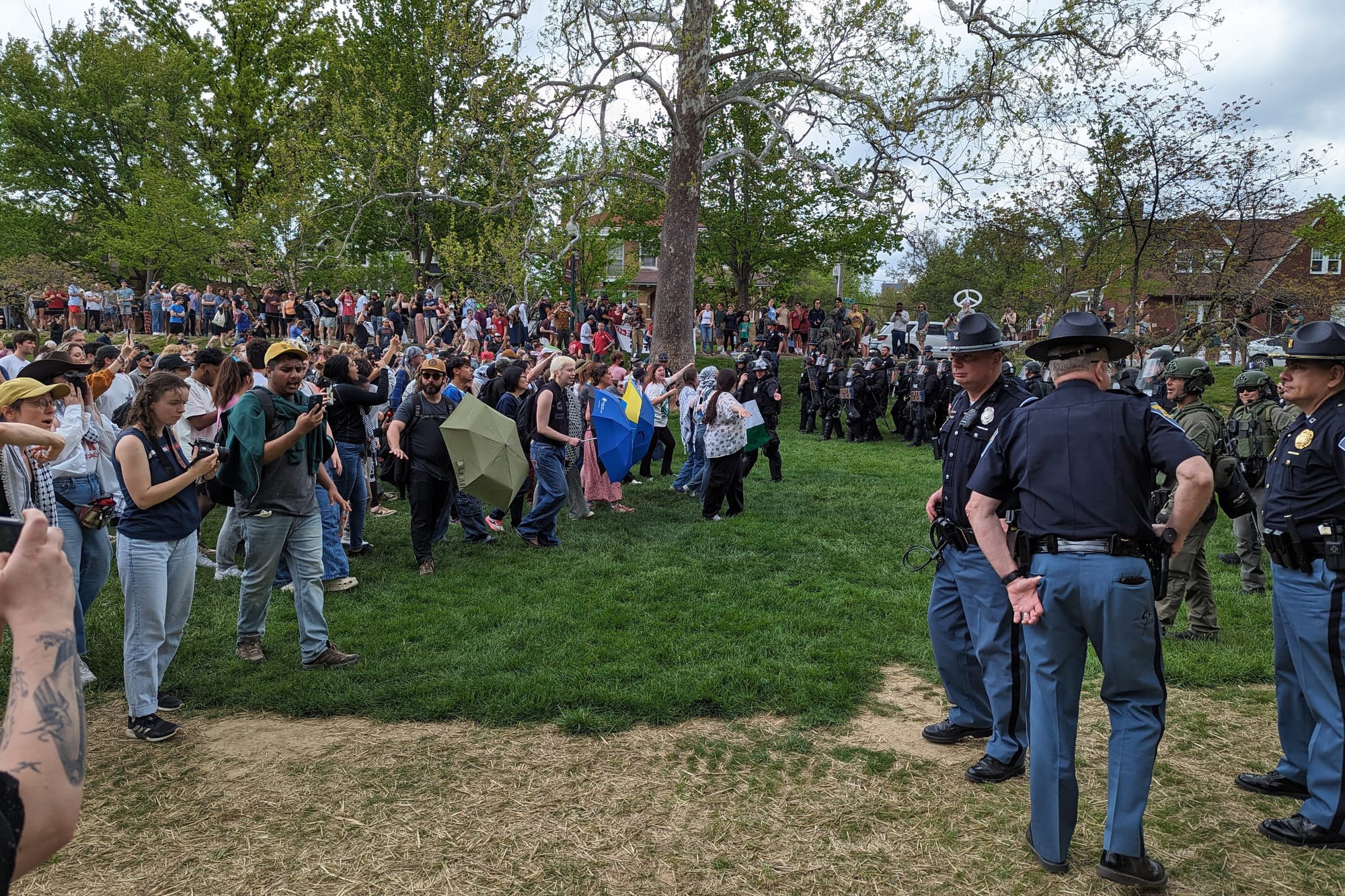
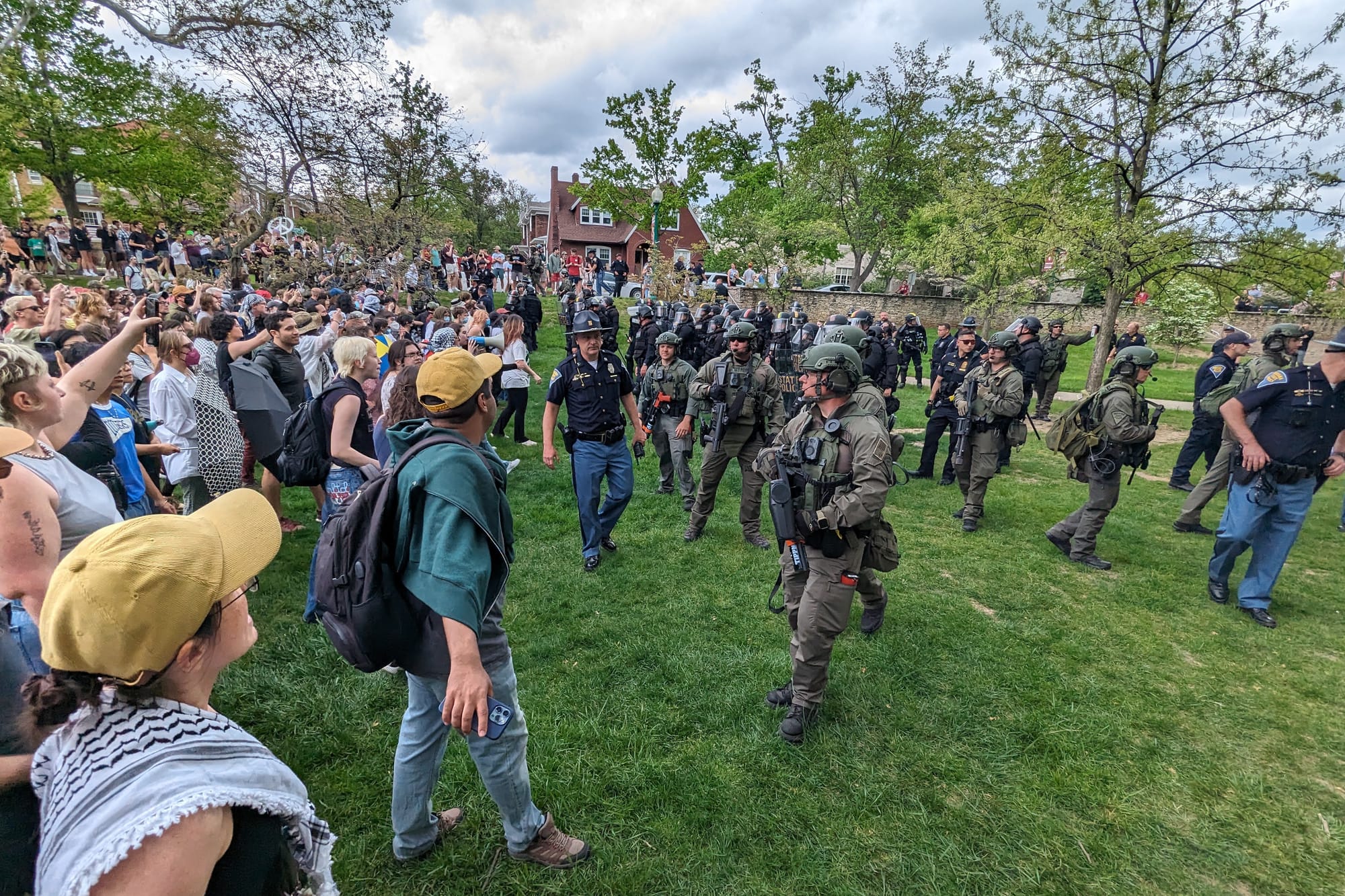
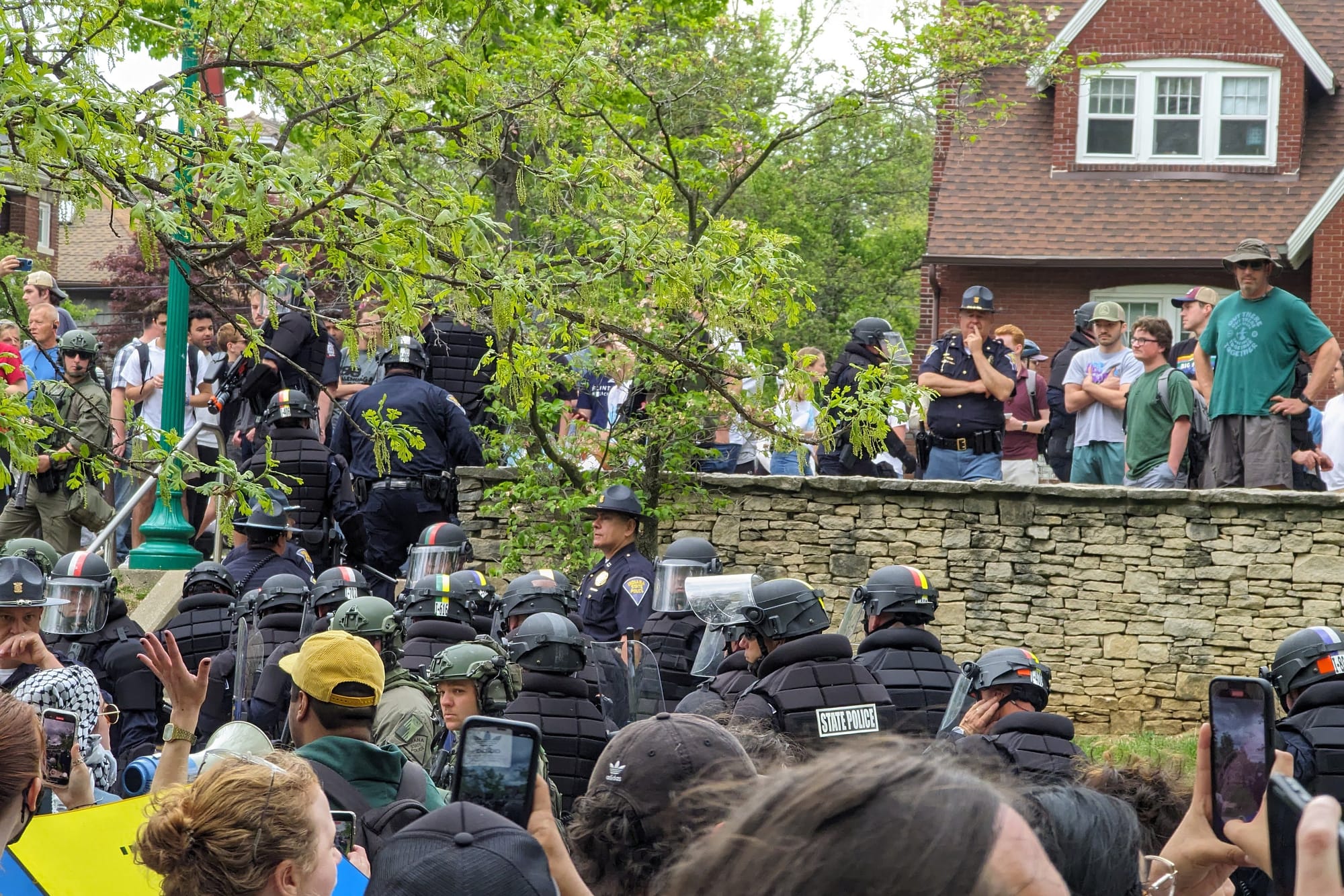



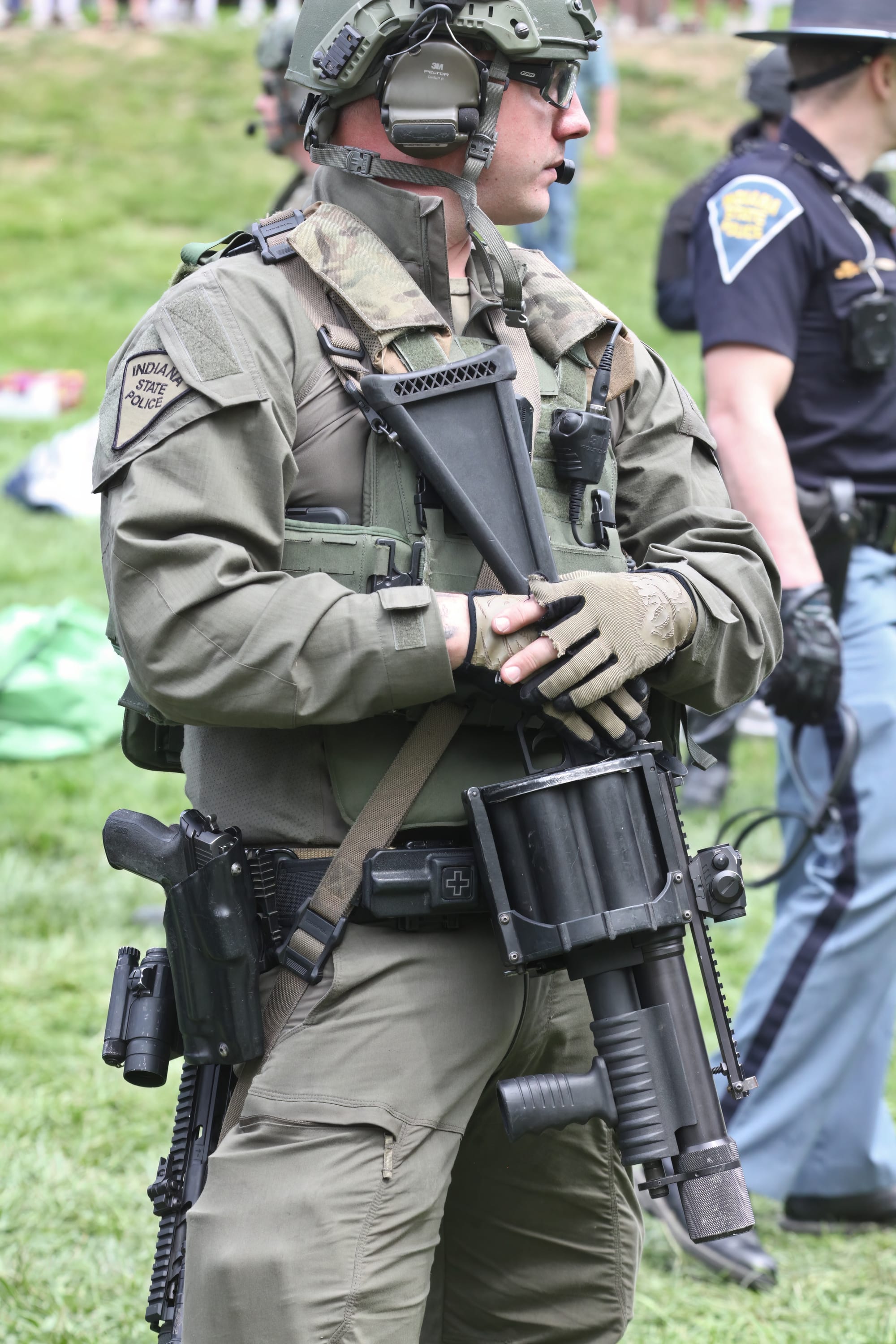
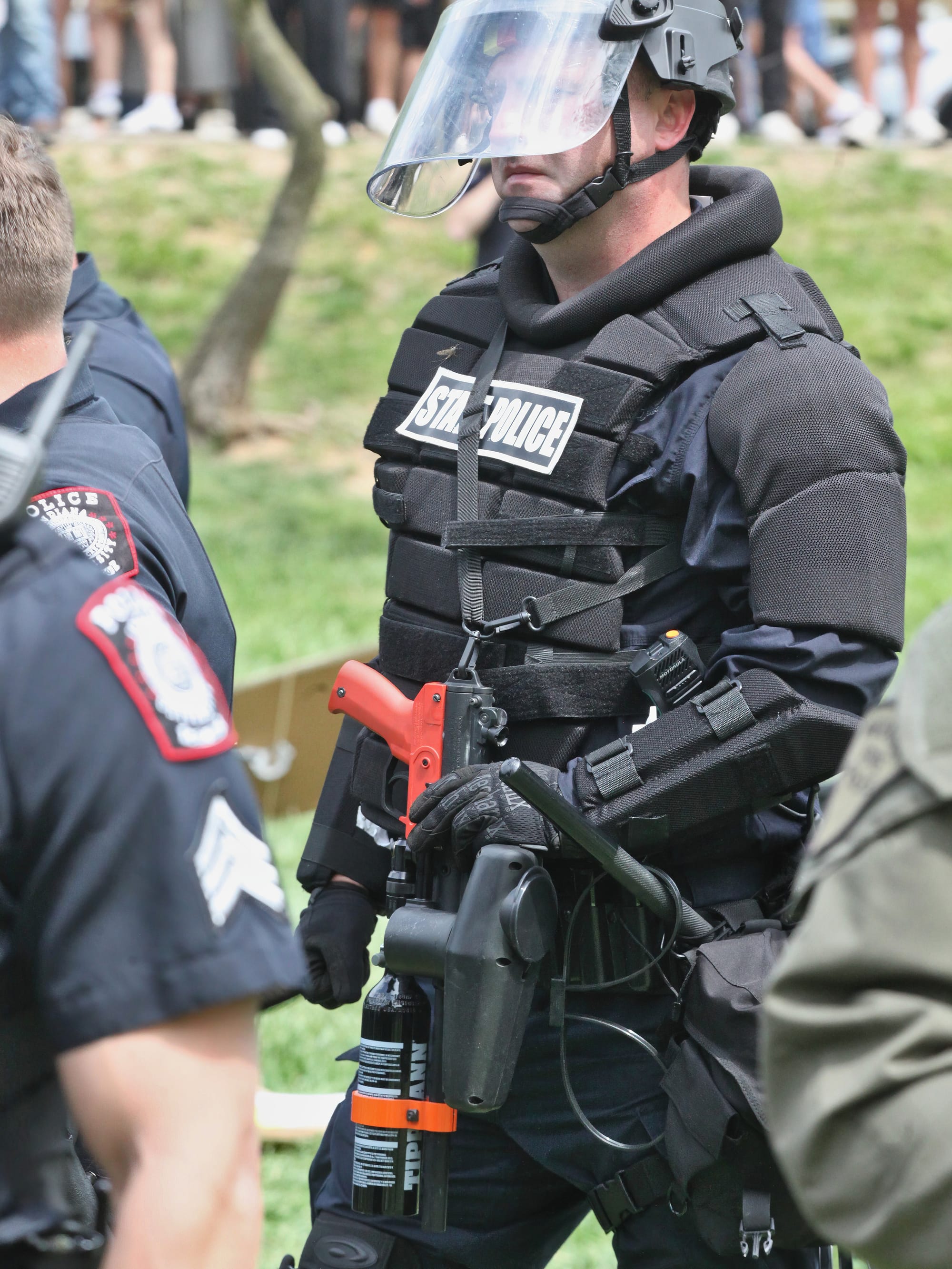


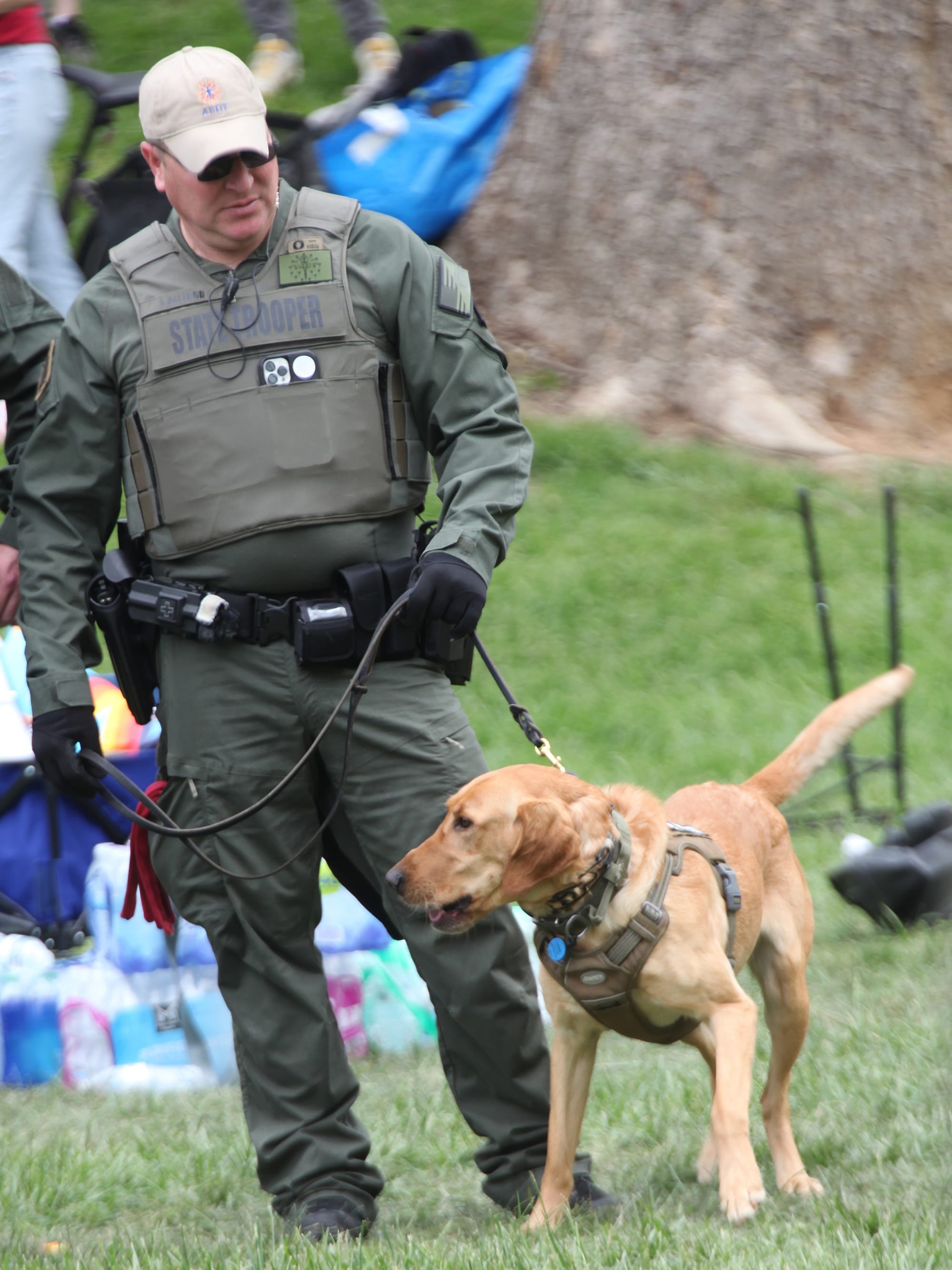







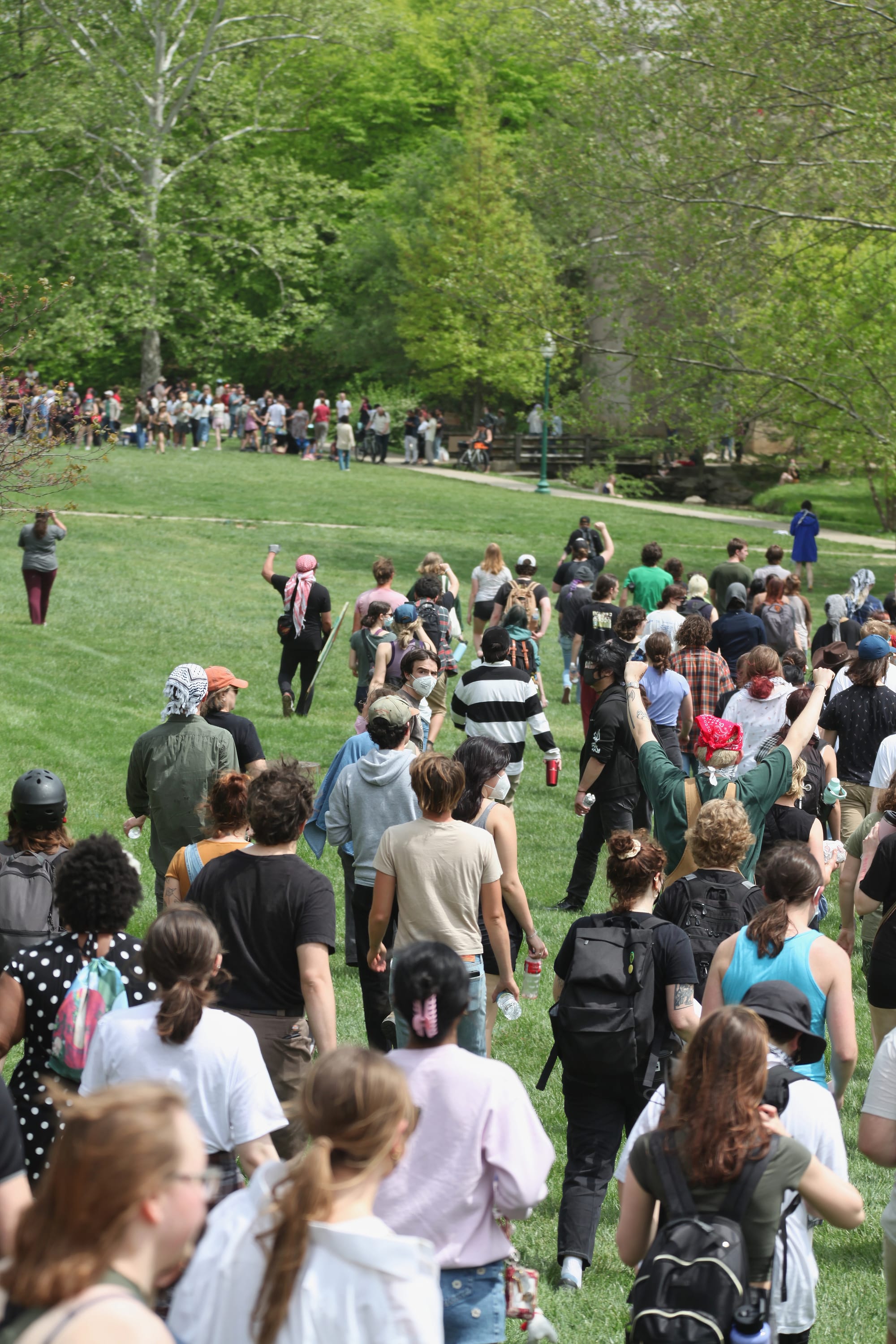
Photos: April 26, 2024
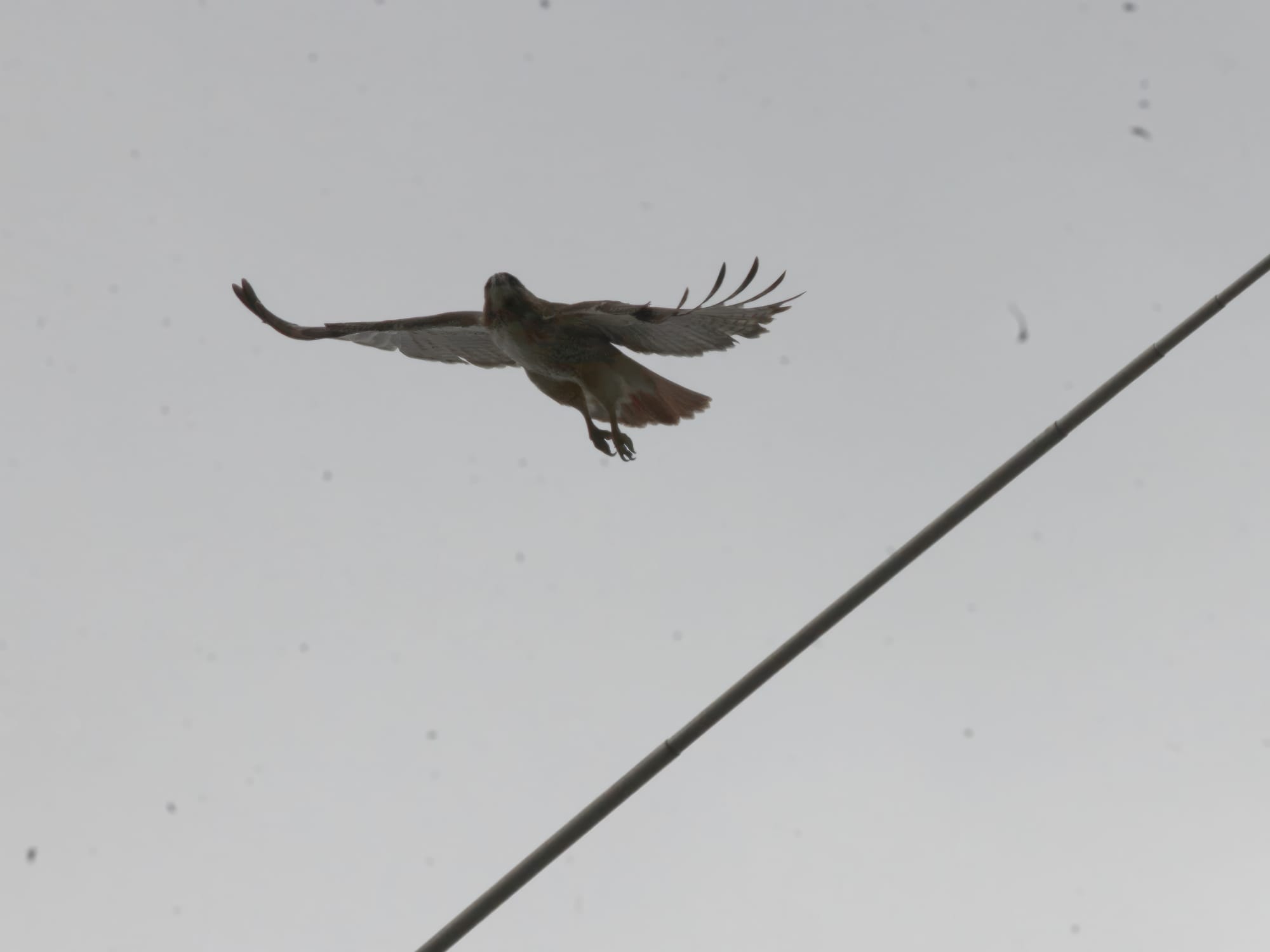
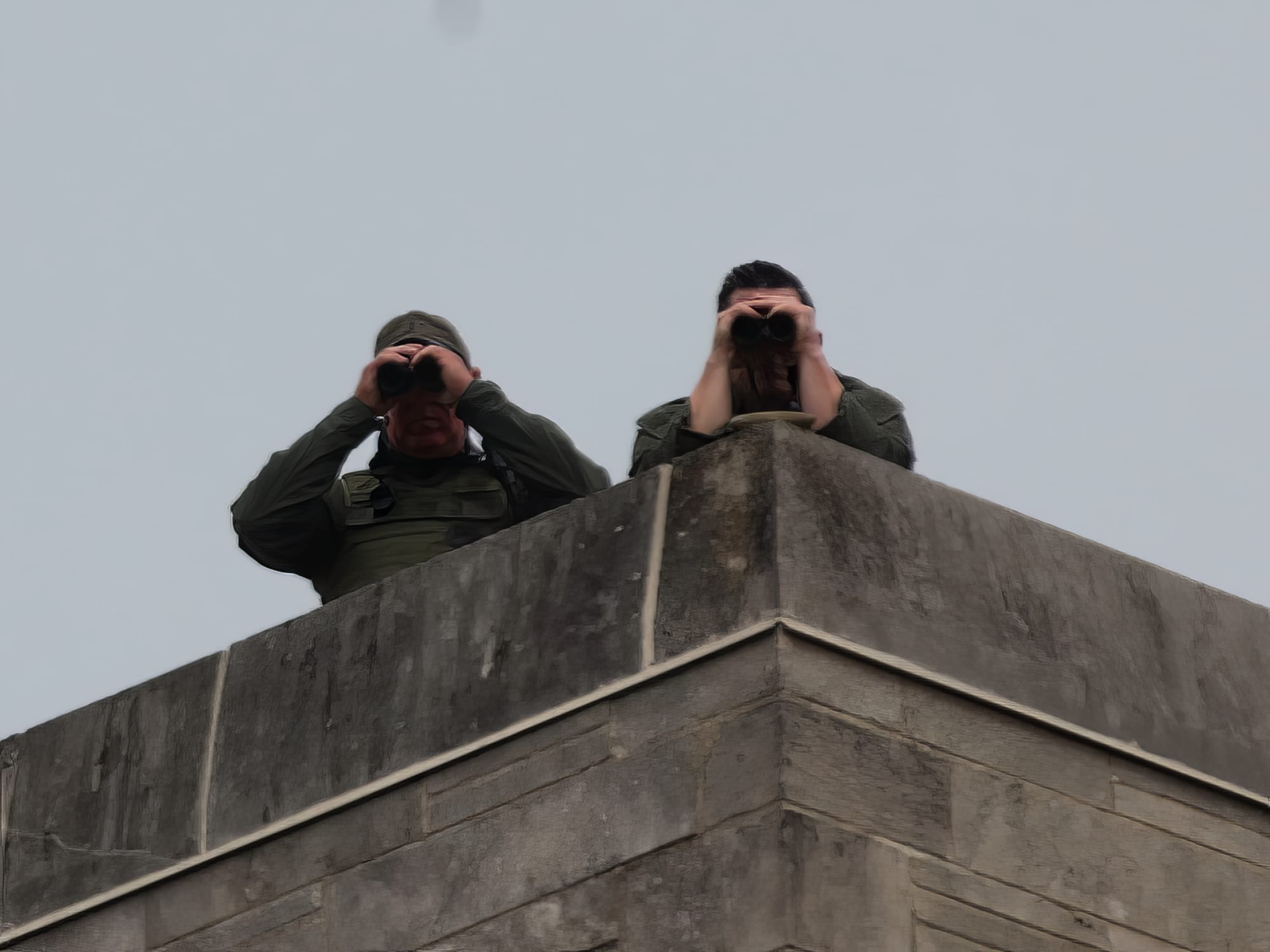
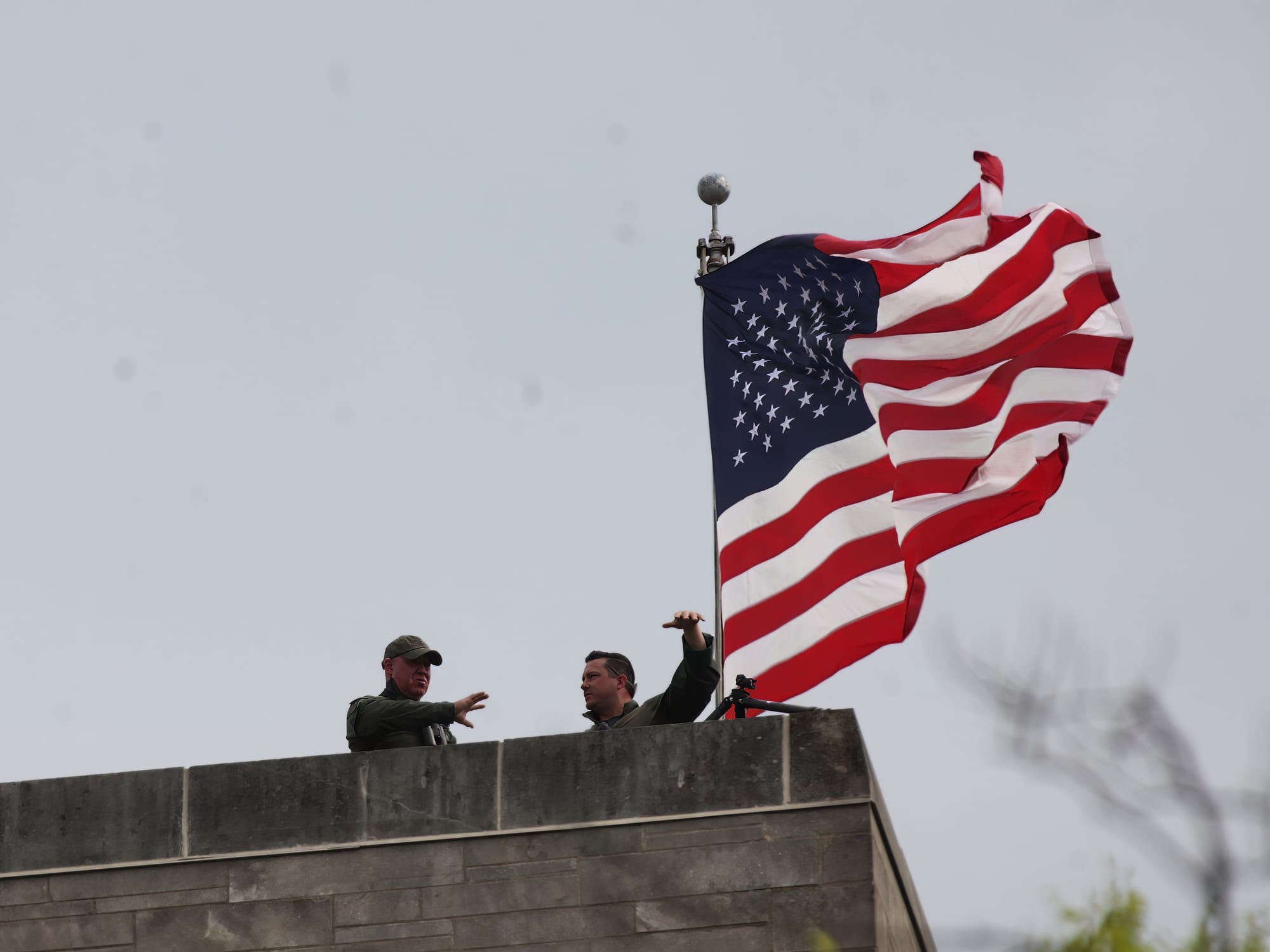
[Updated Sunday, April 28, 2024. Status of Dunn Meadow around 10 a.m. on Sunday. Demonstrators have returned, some having spent the night there.]





Comments ()